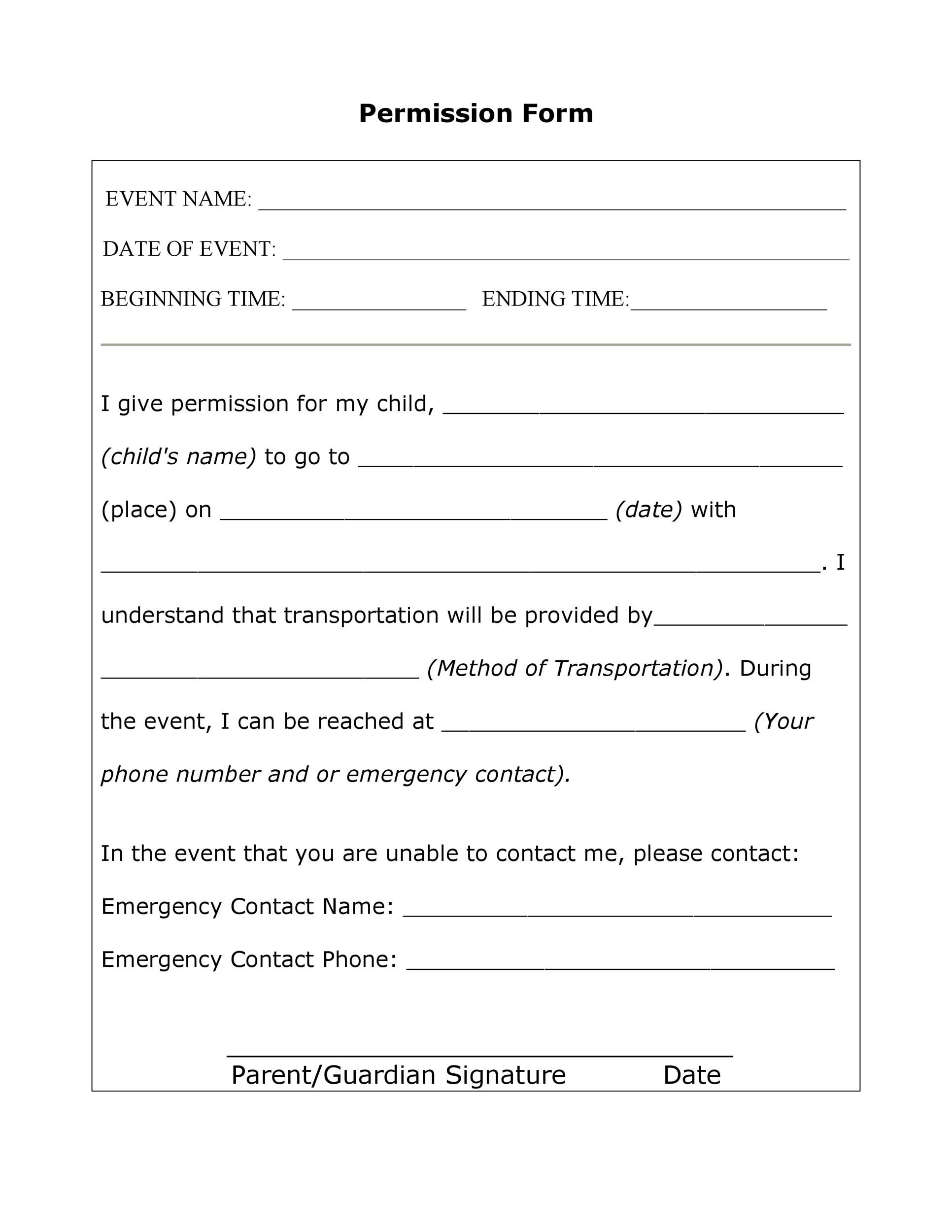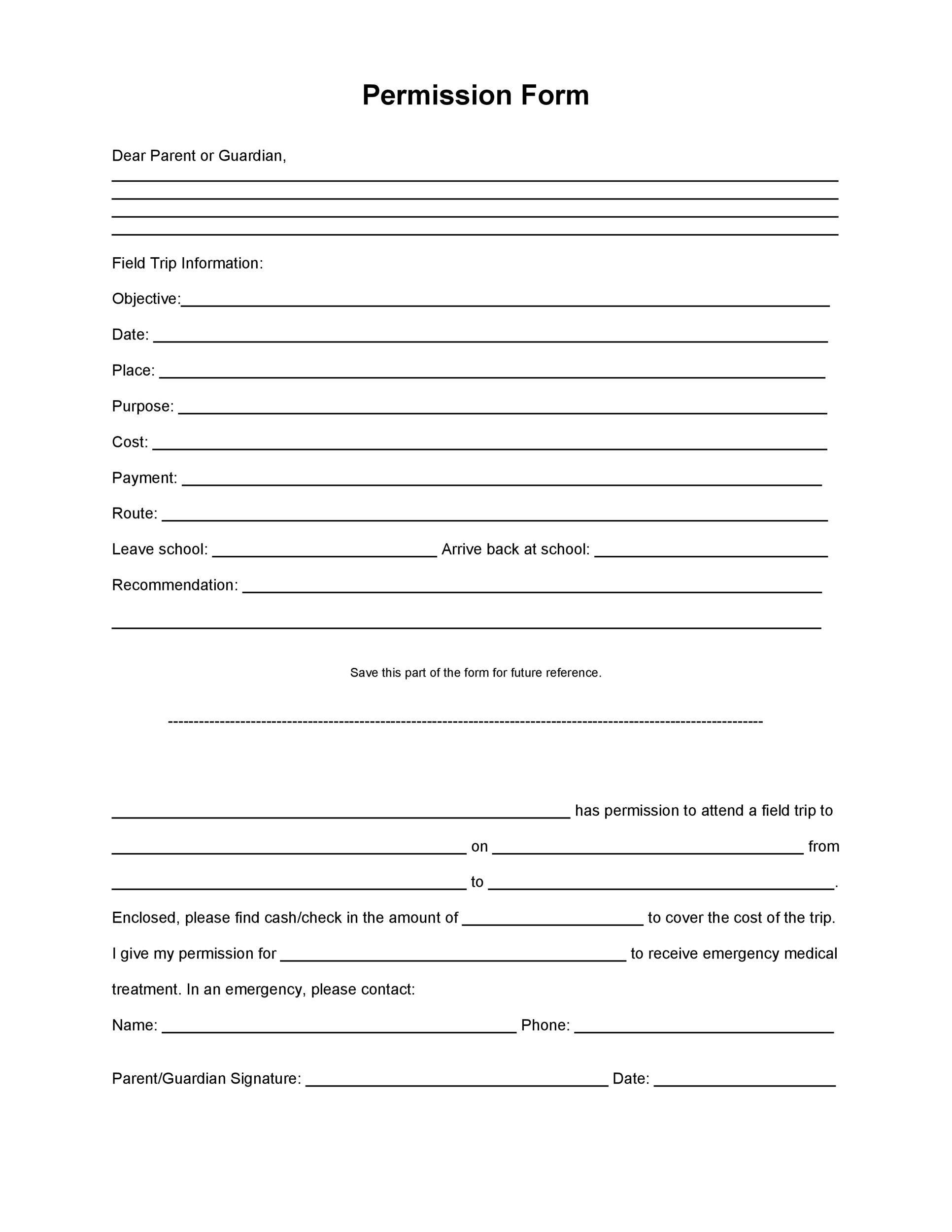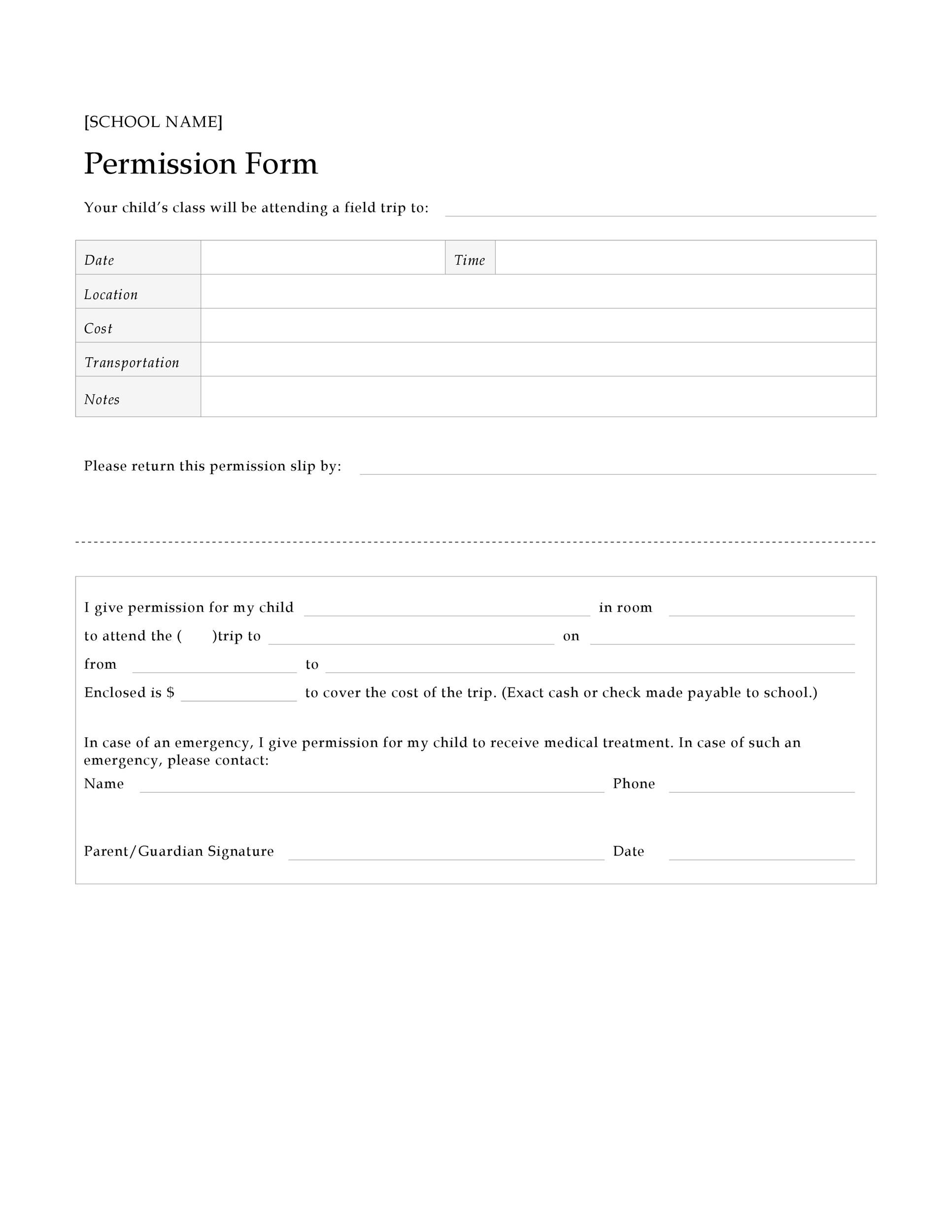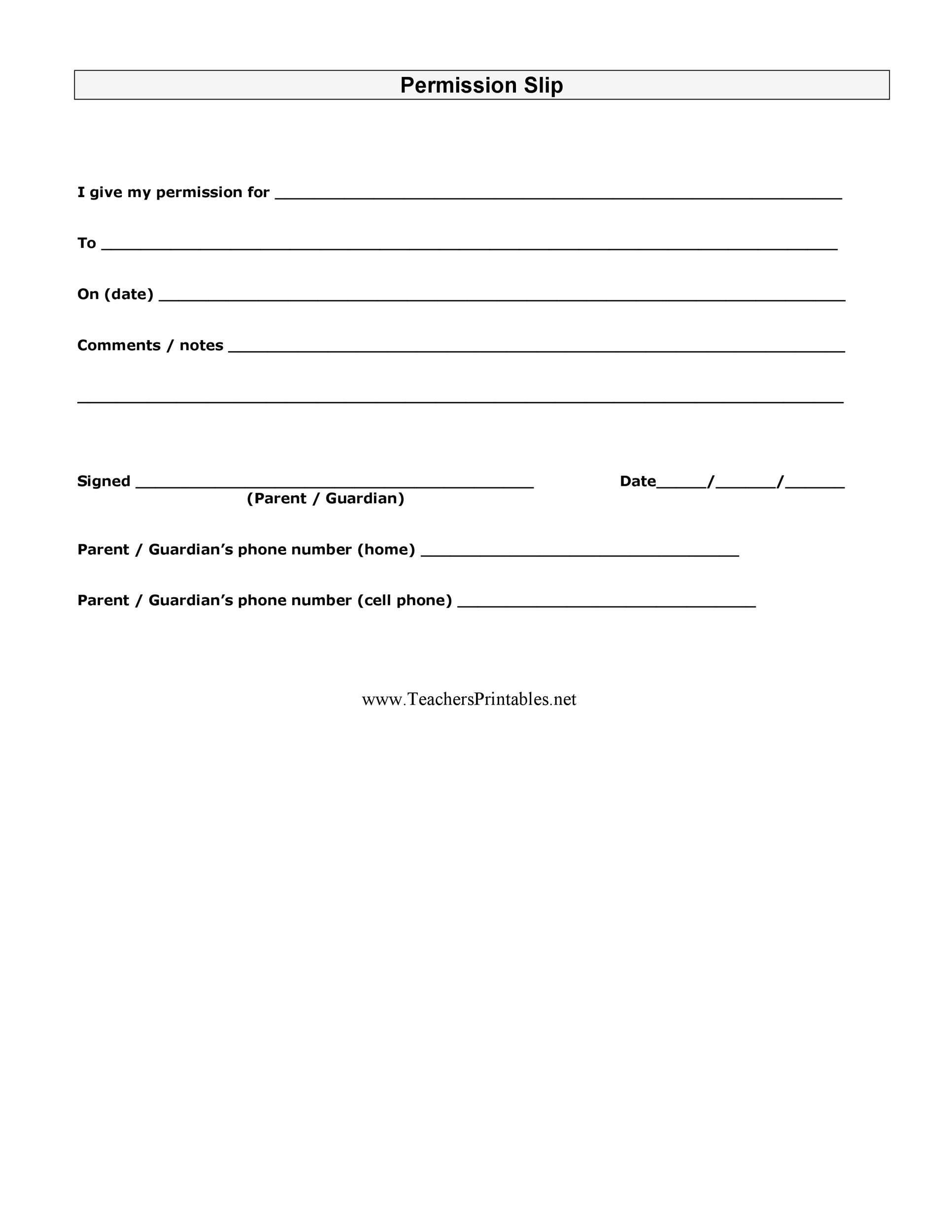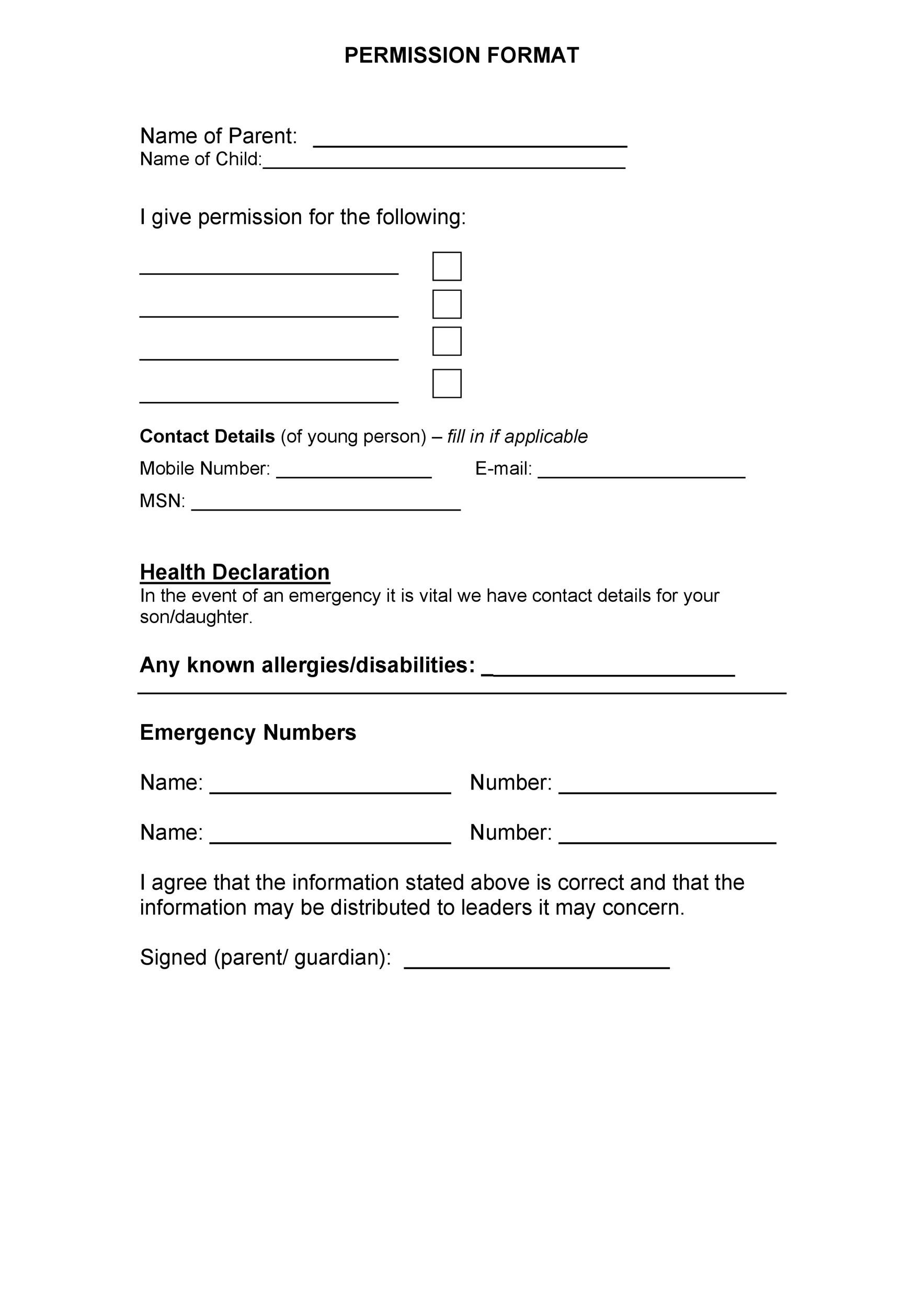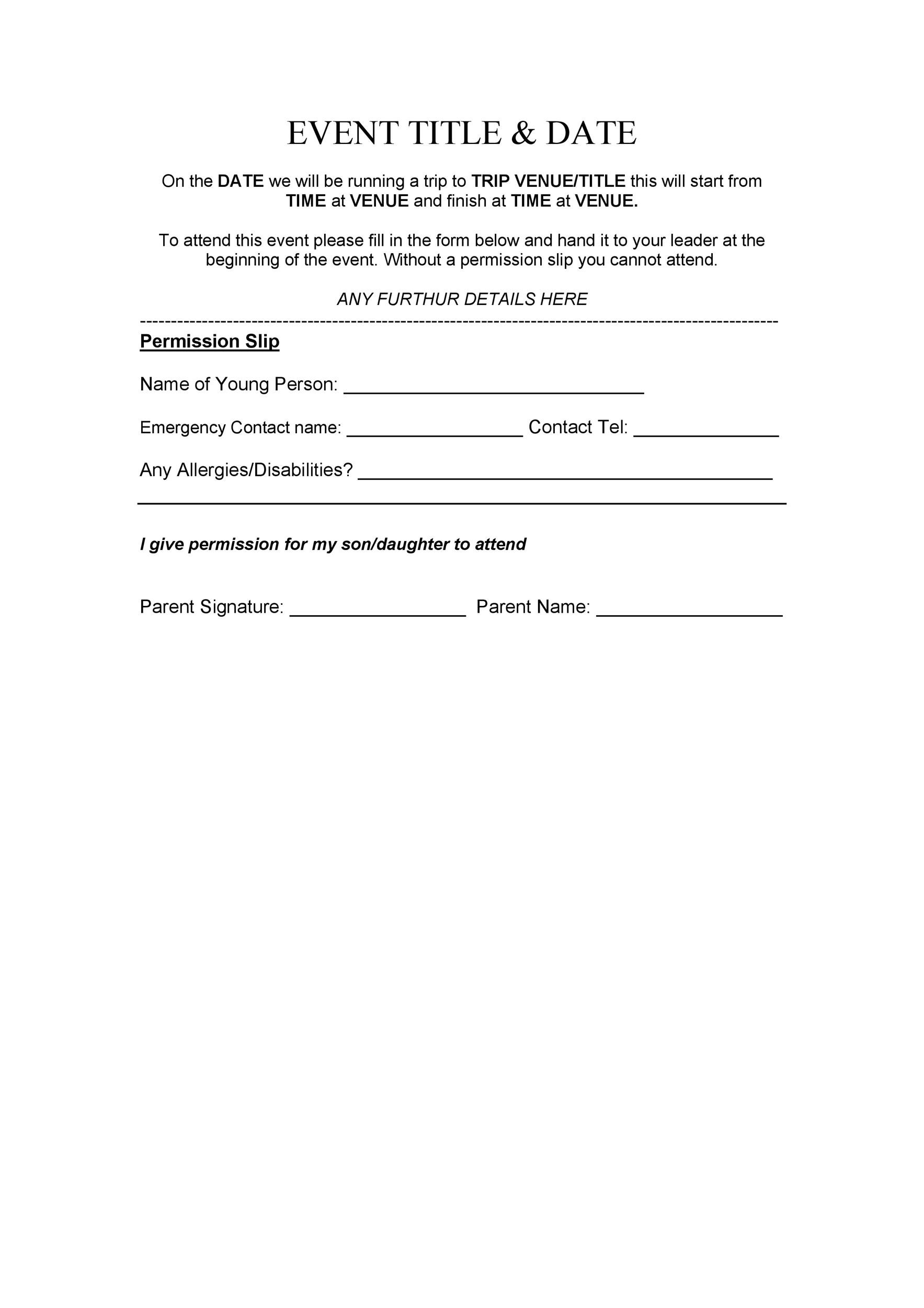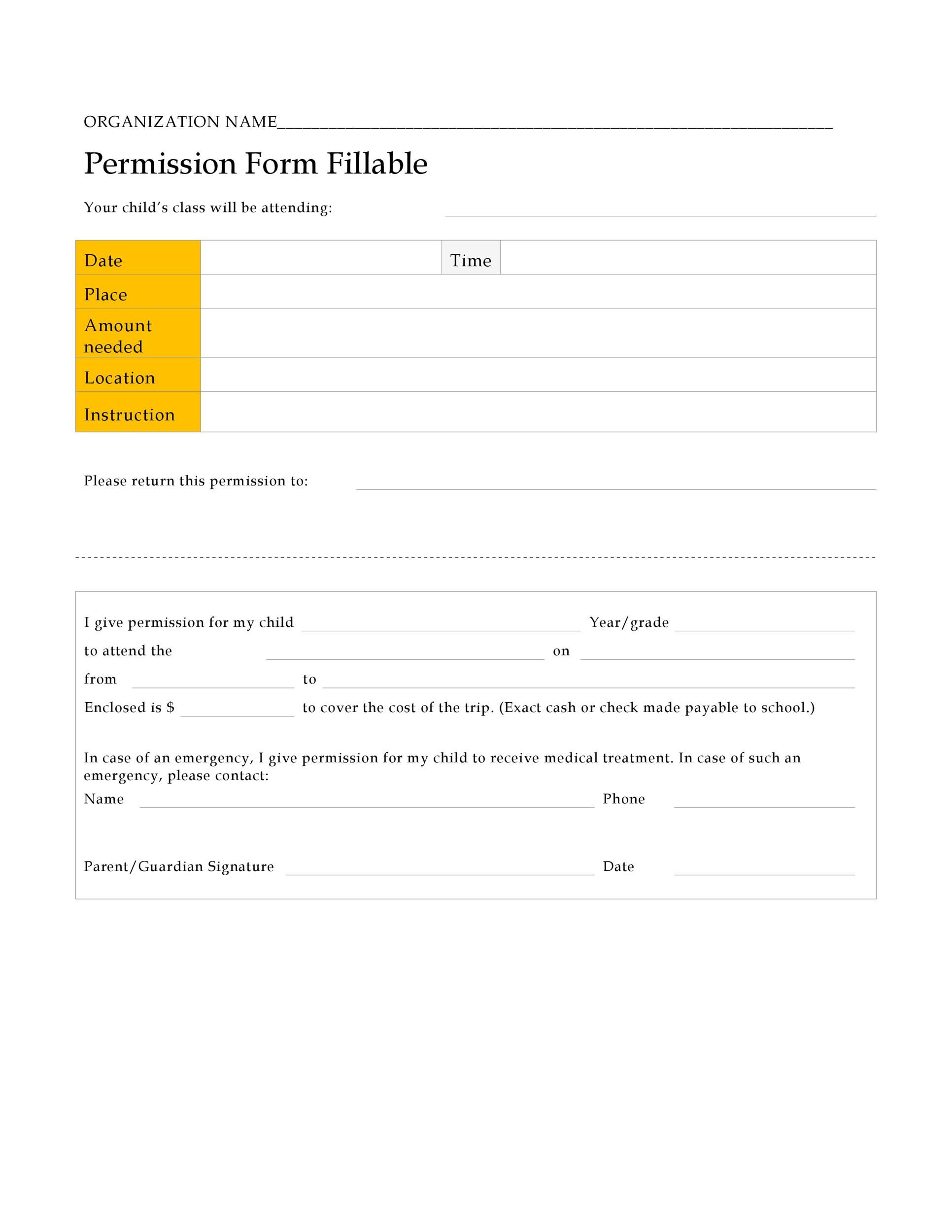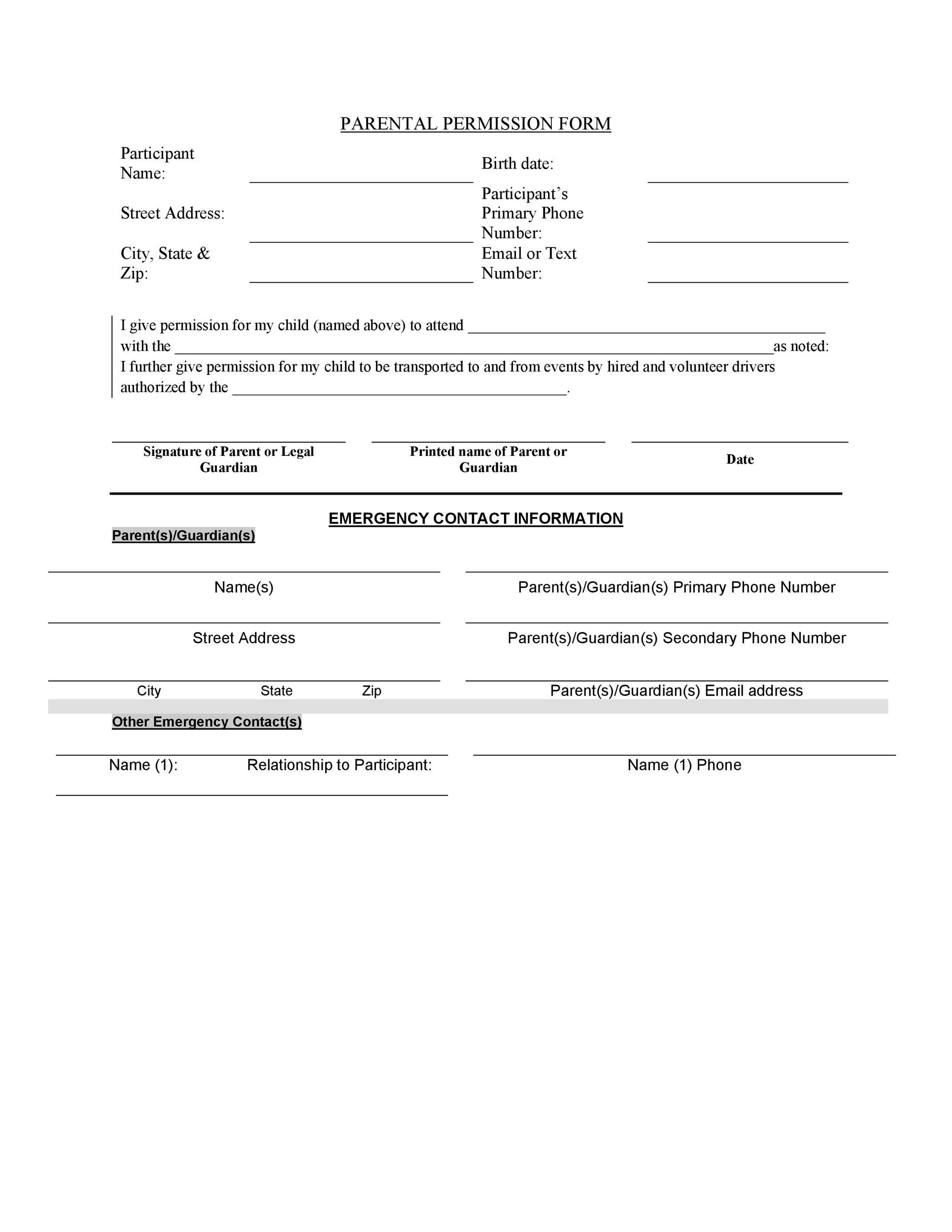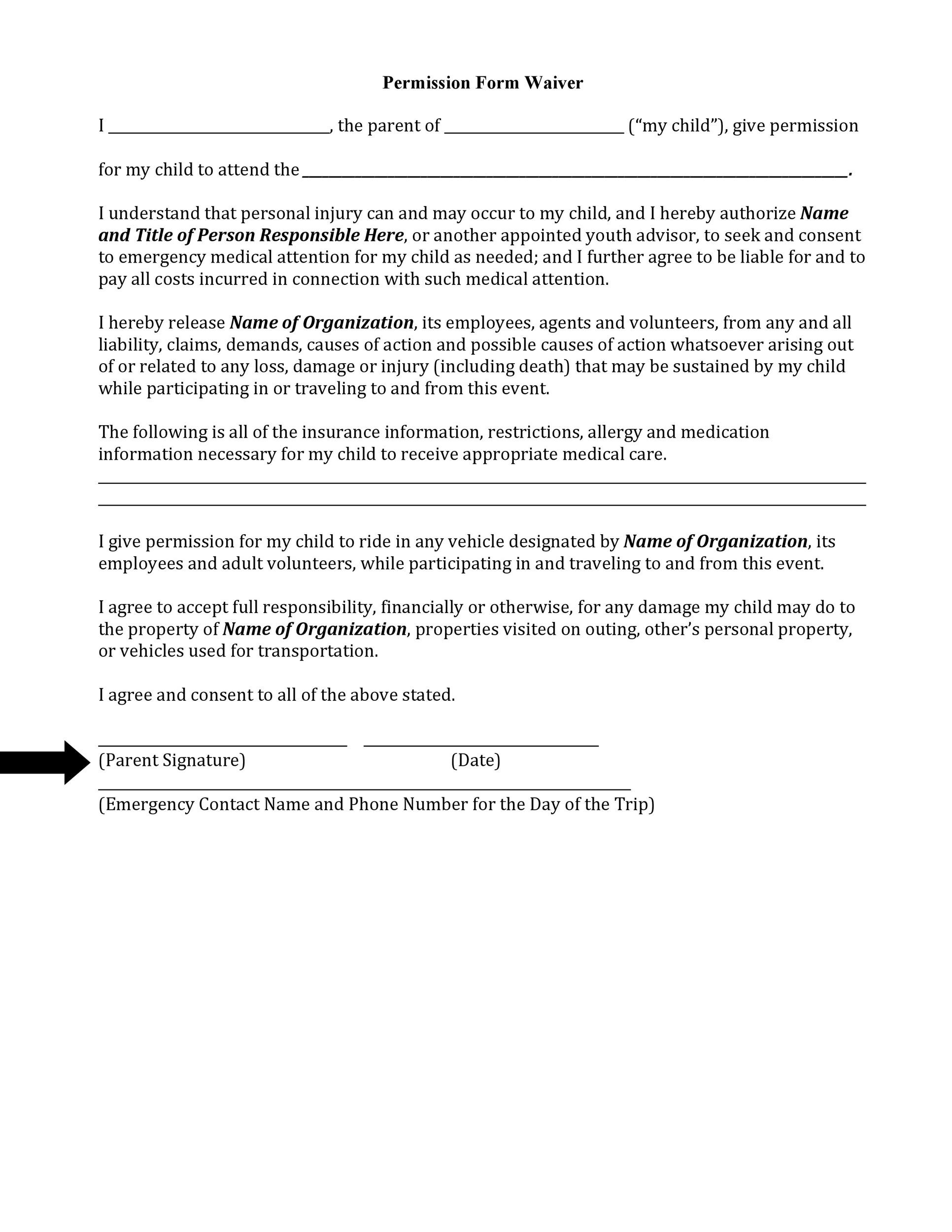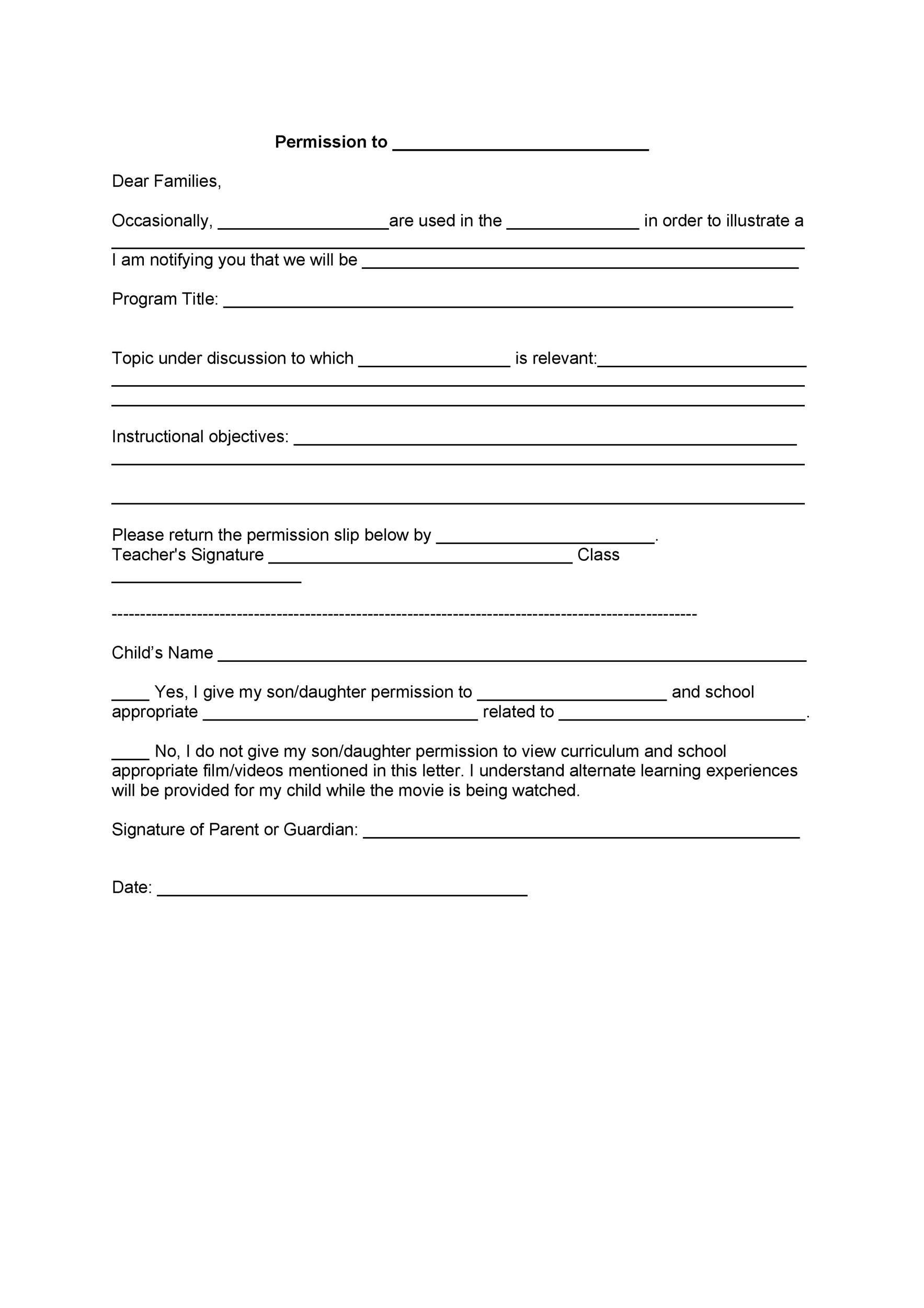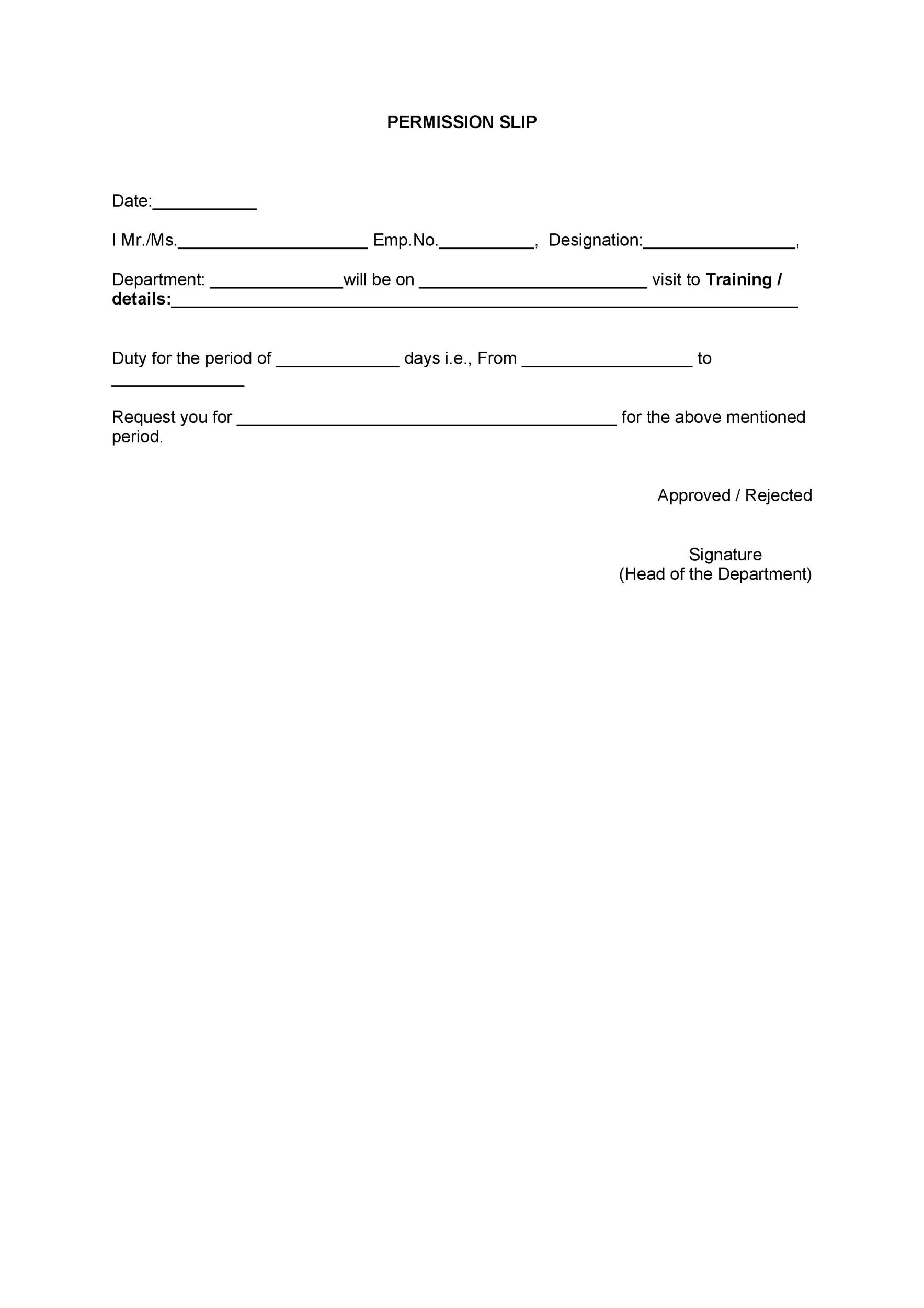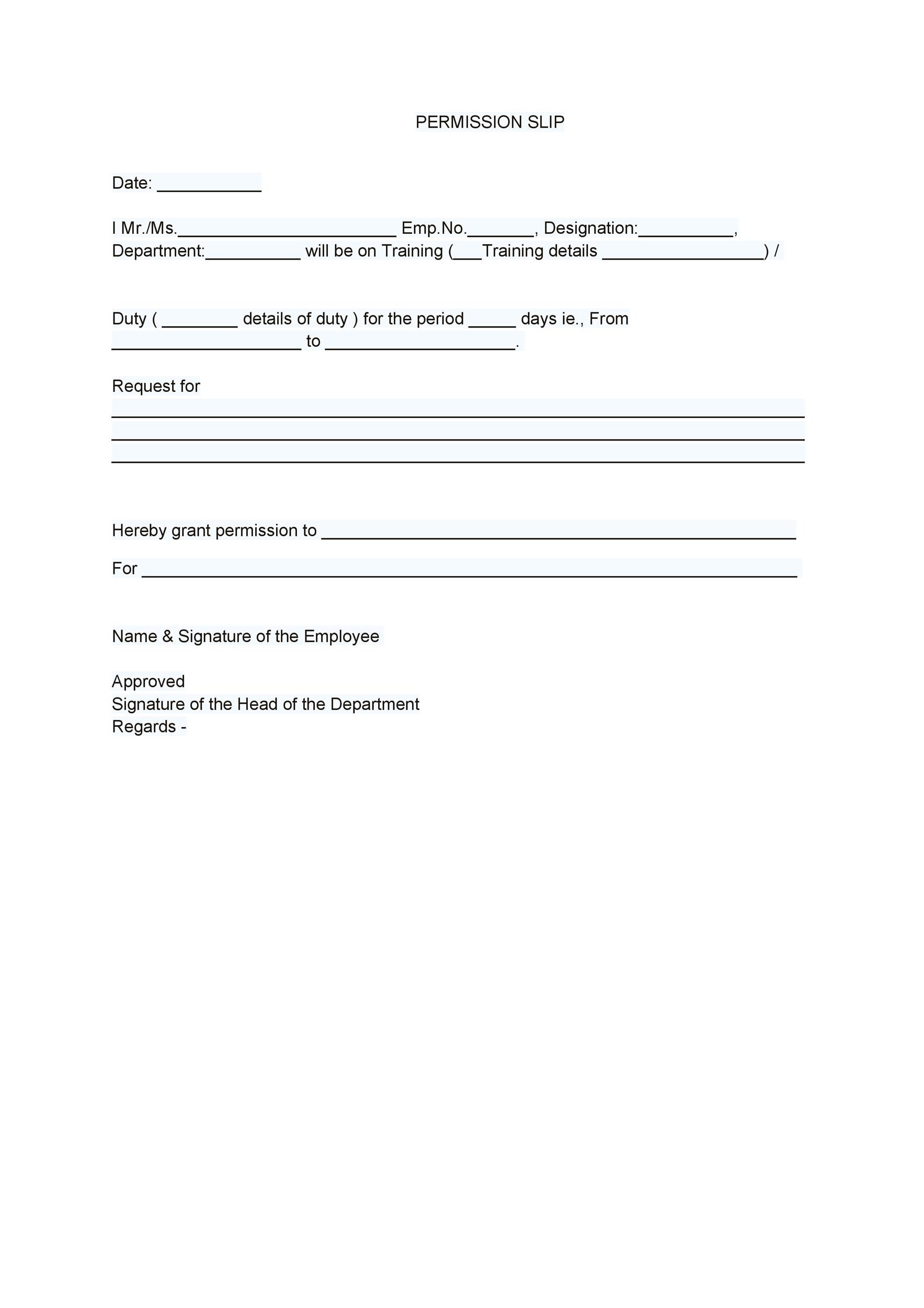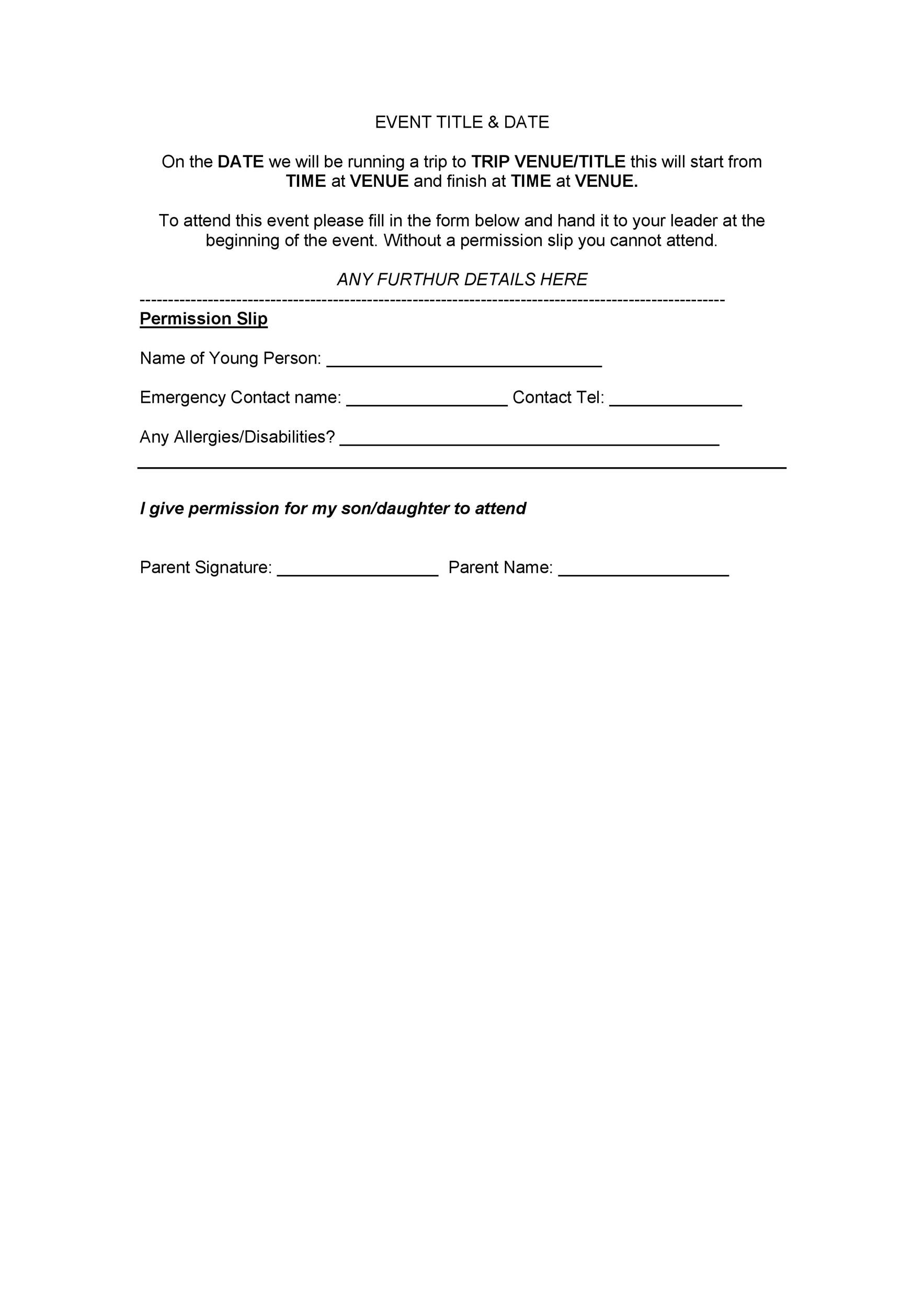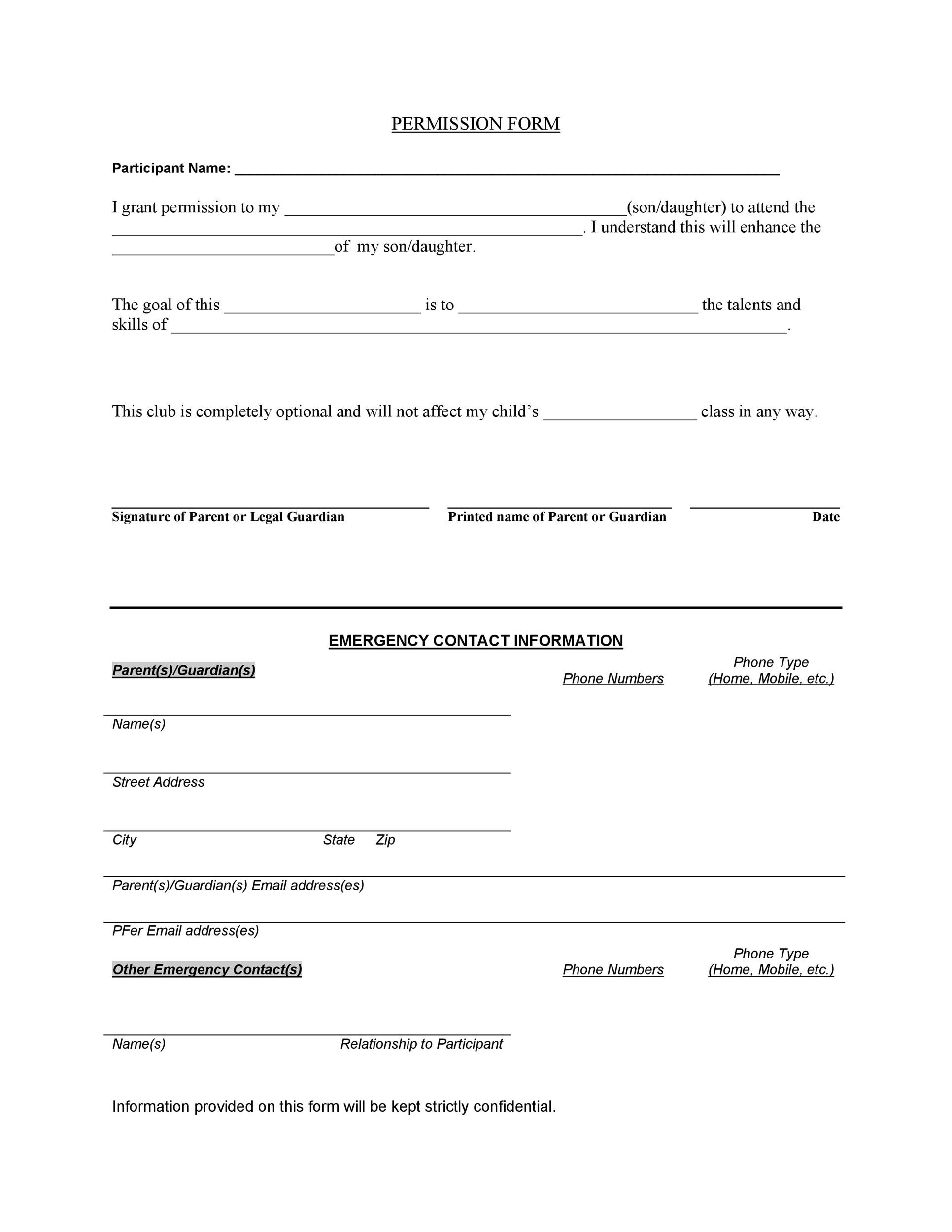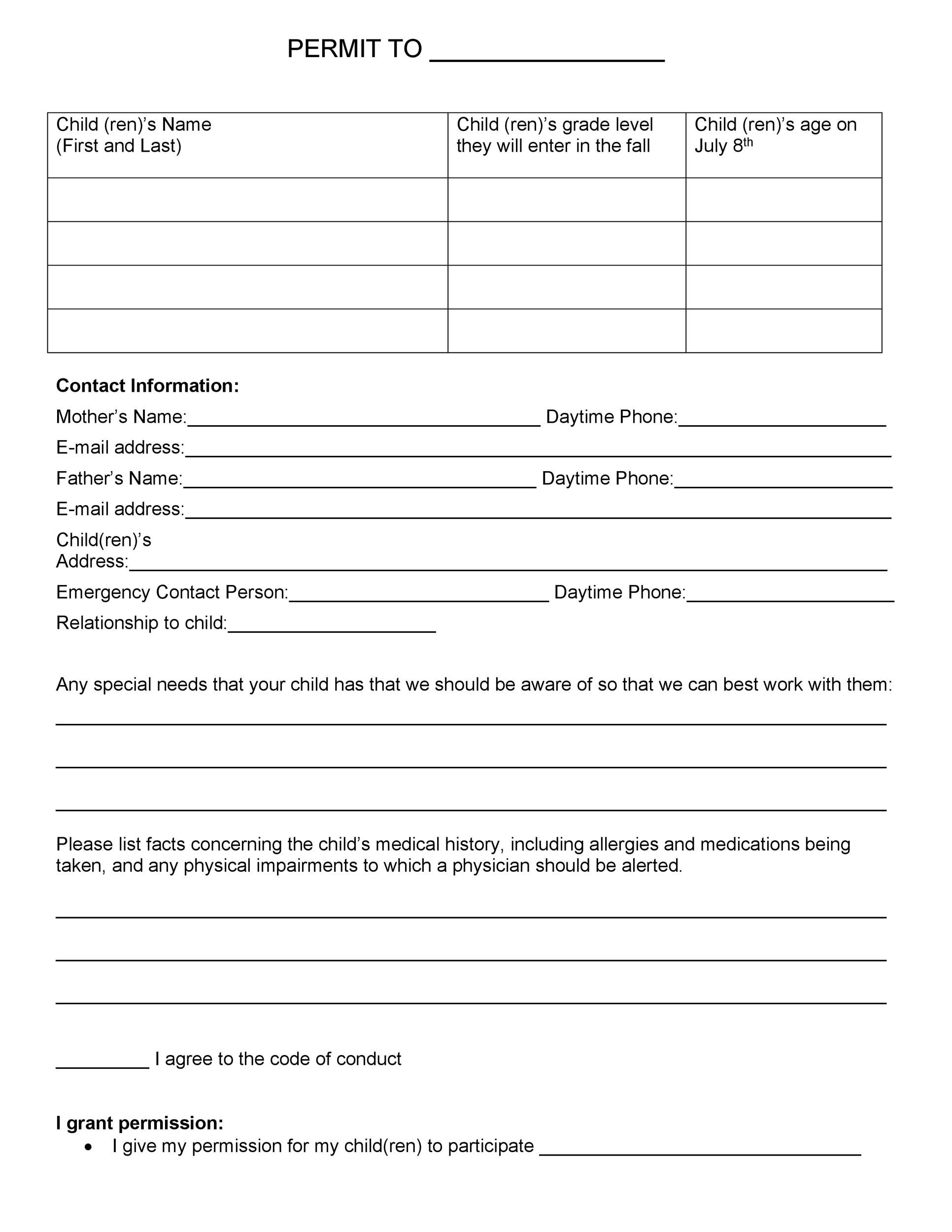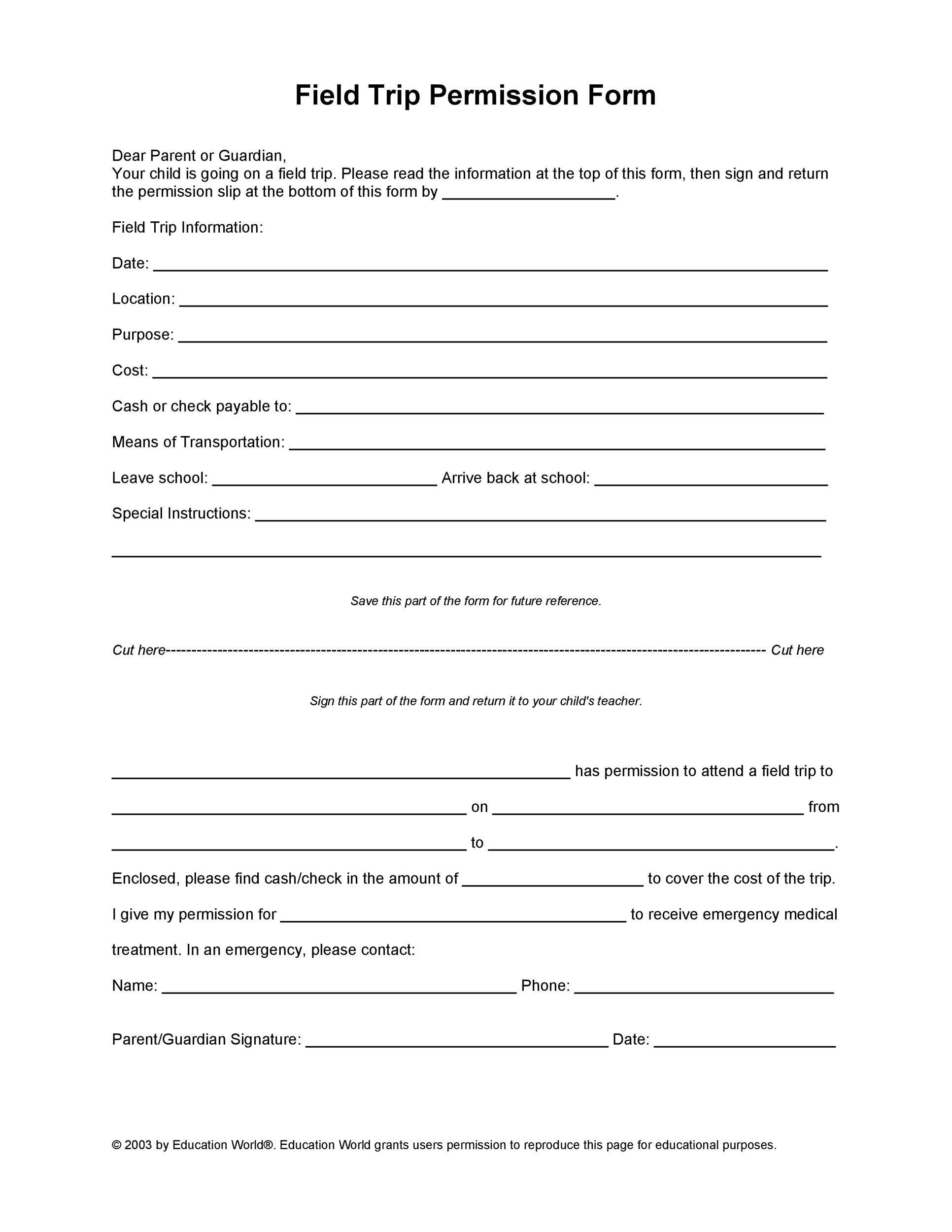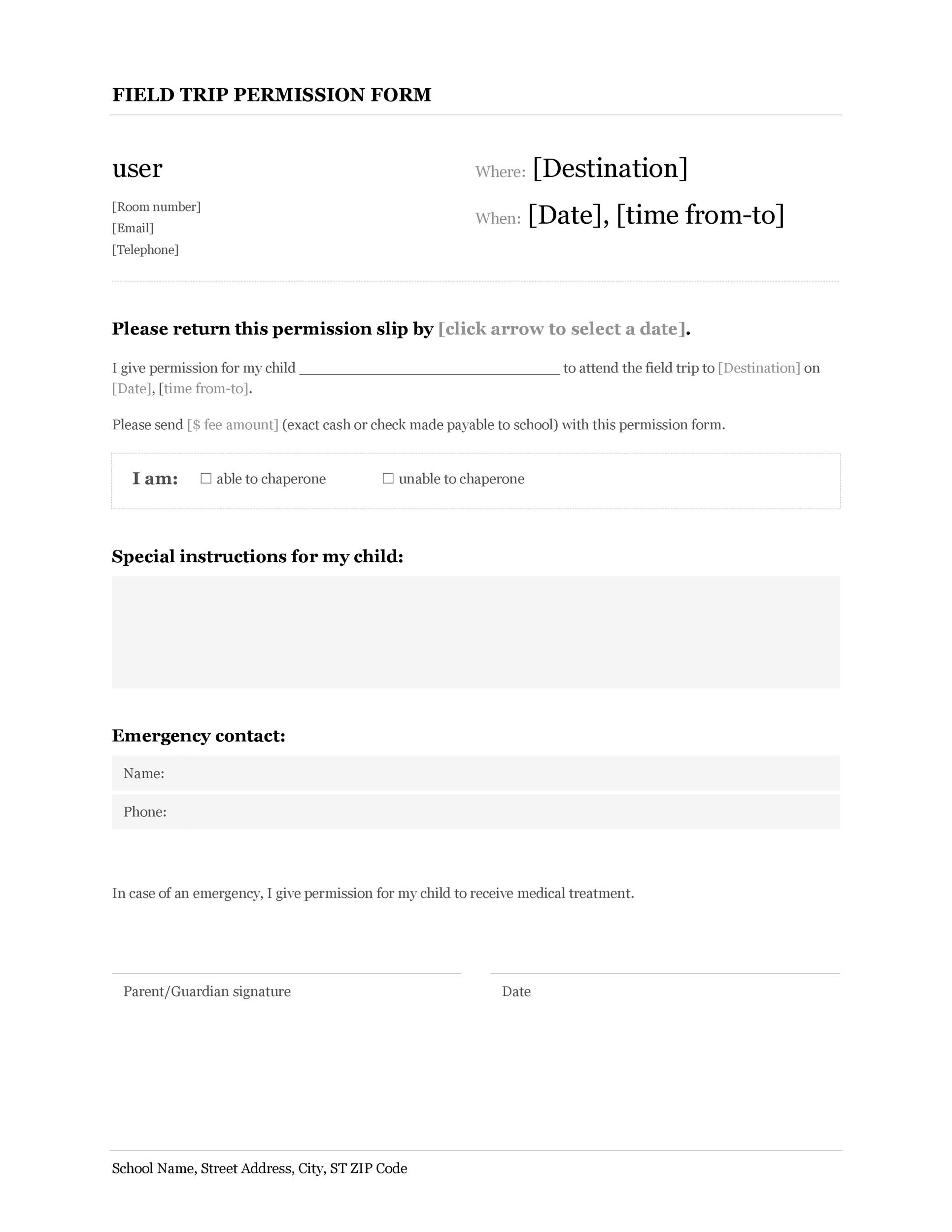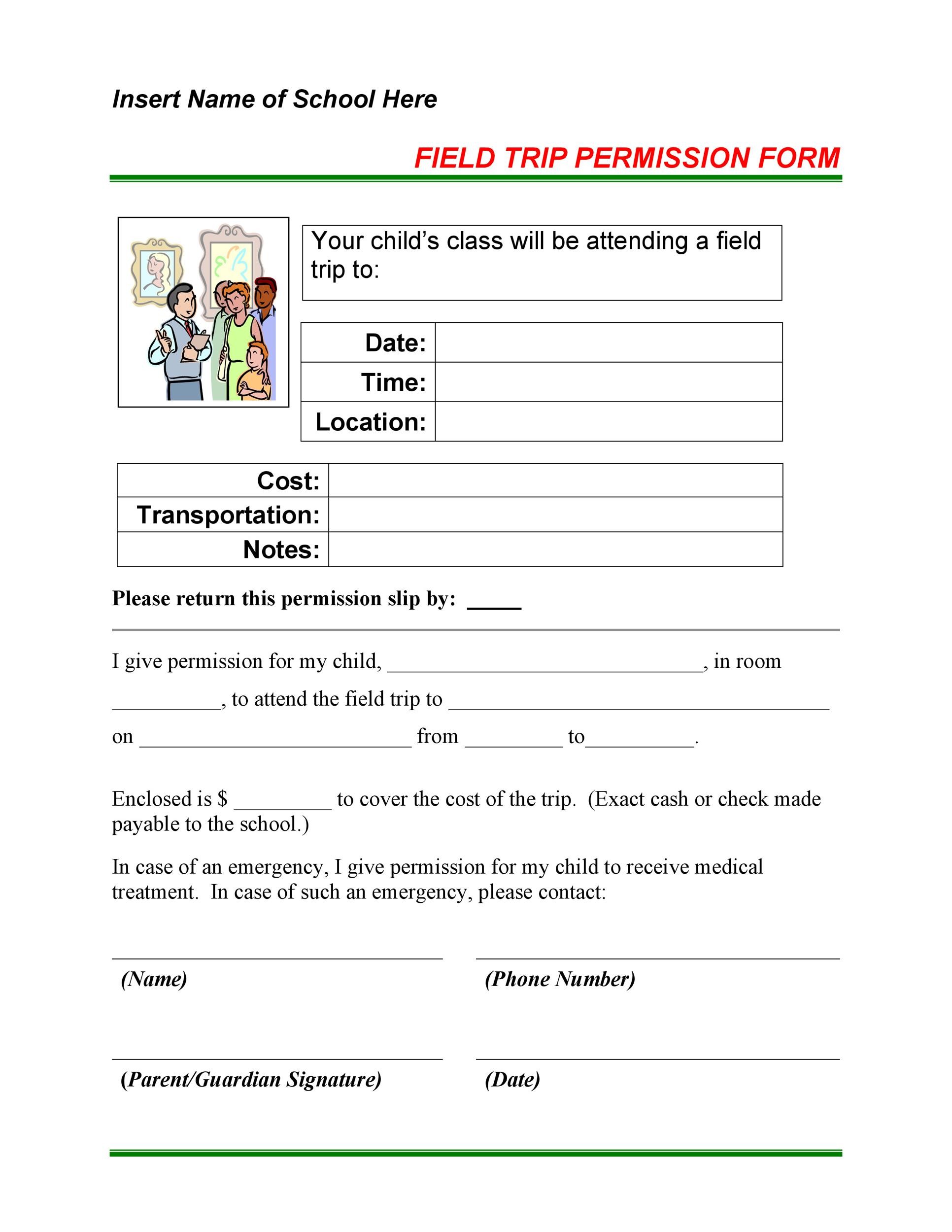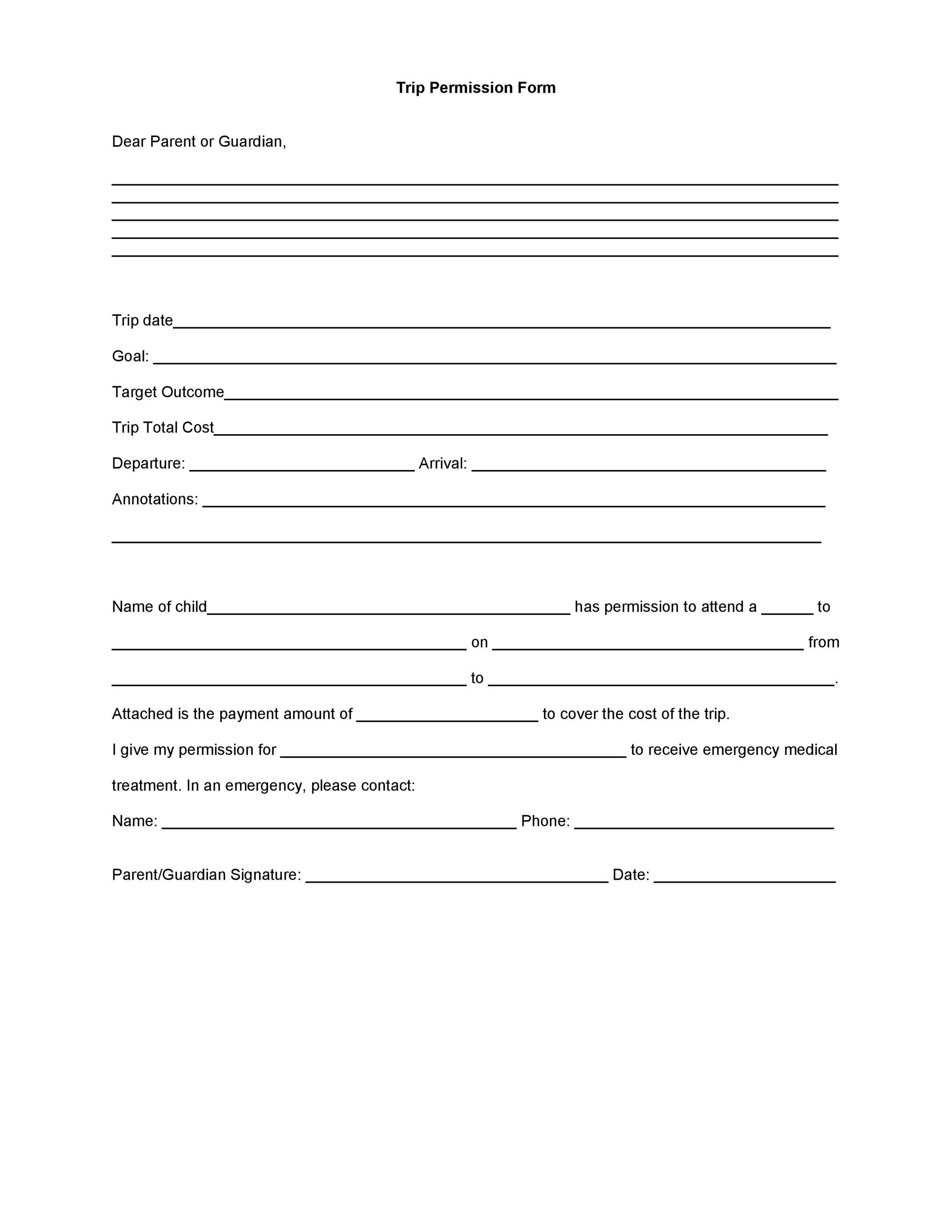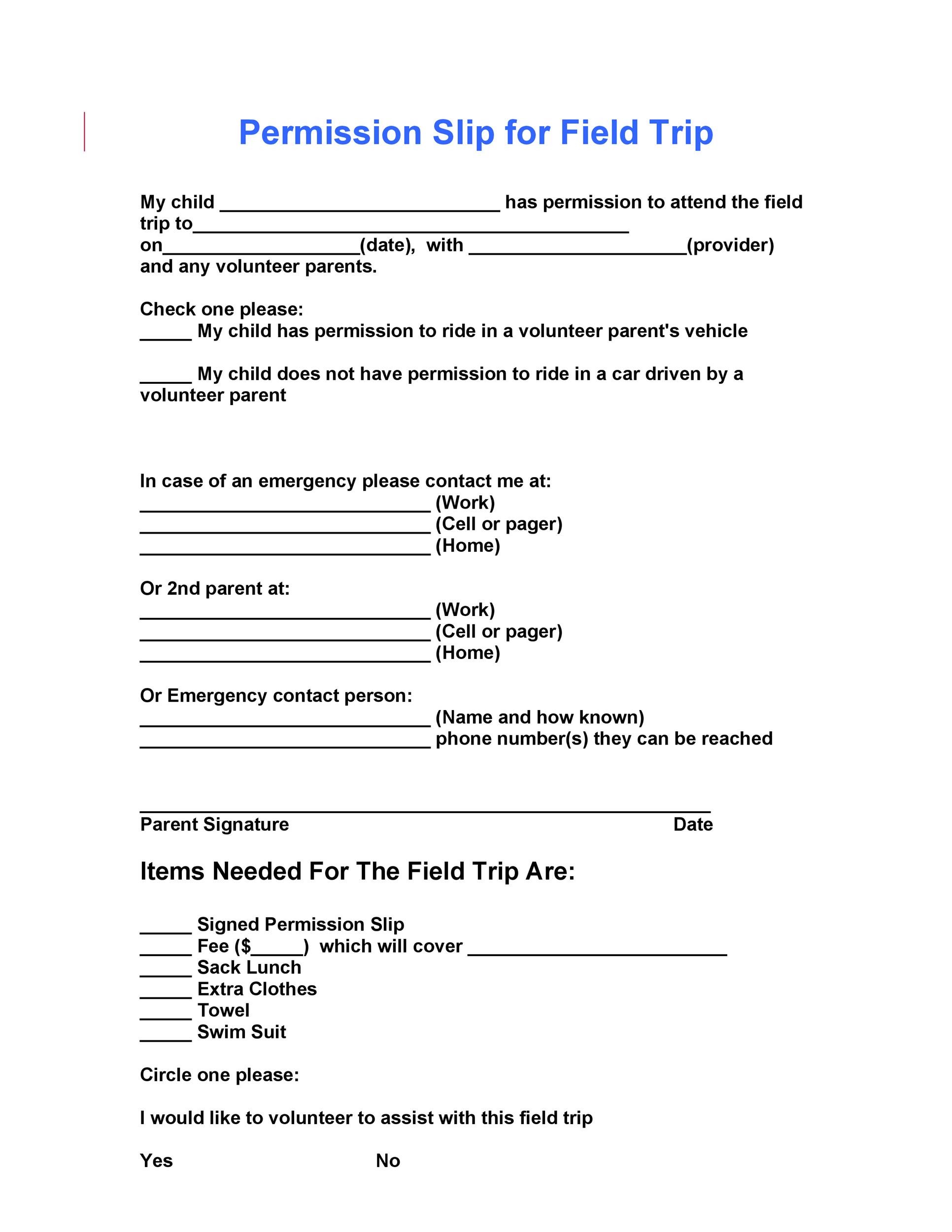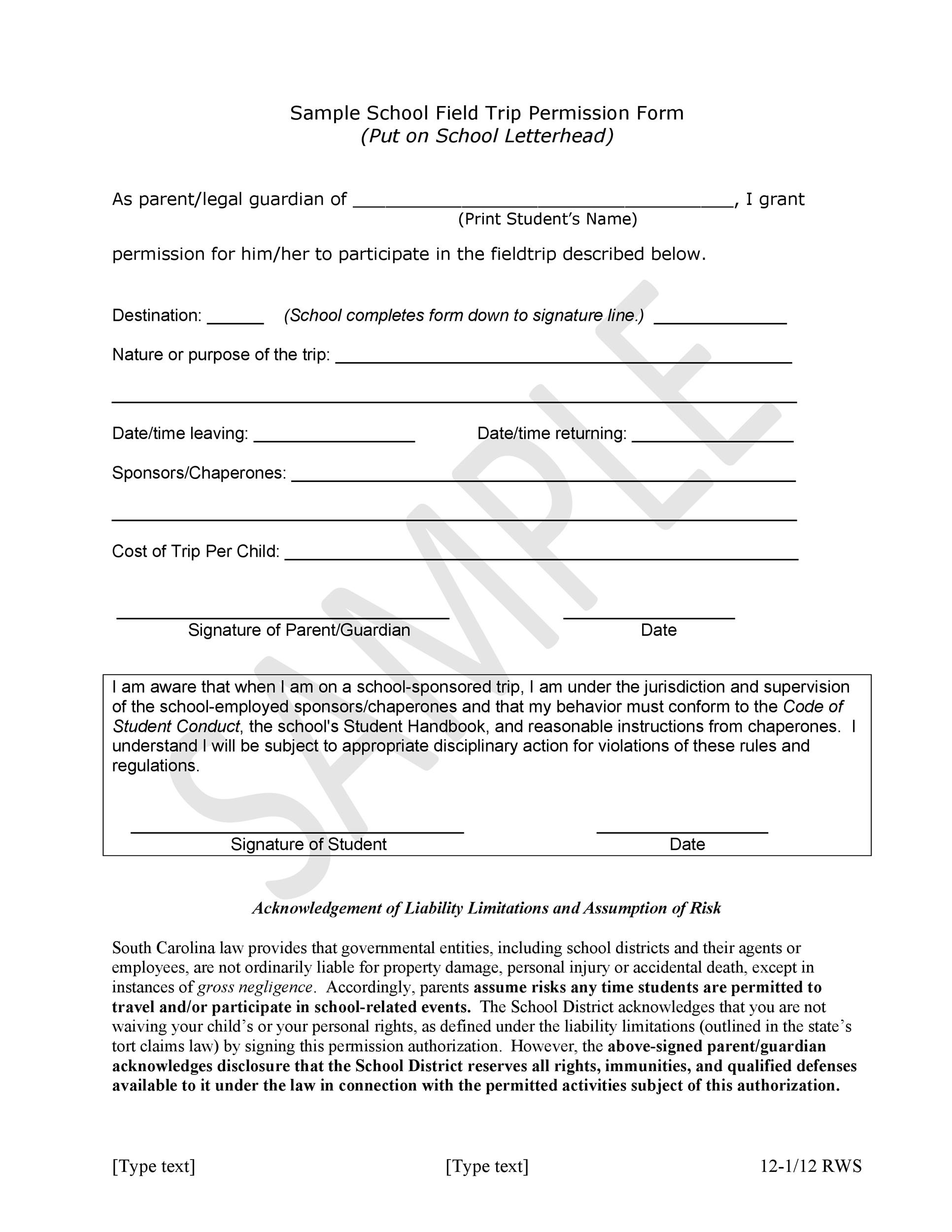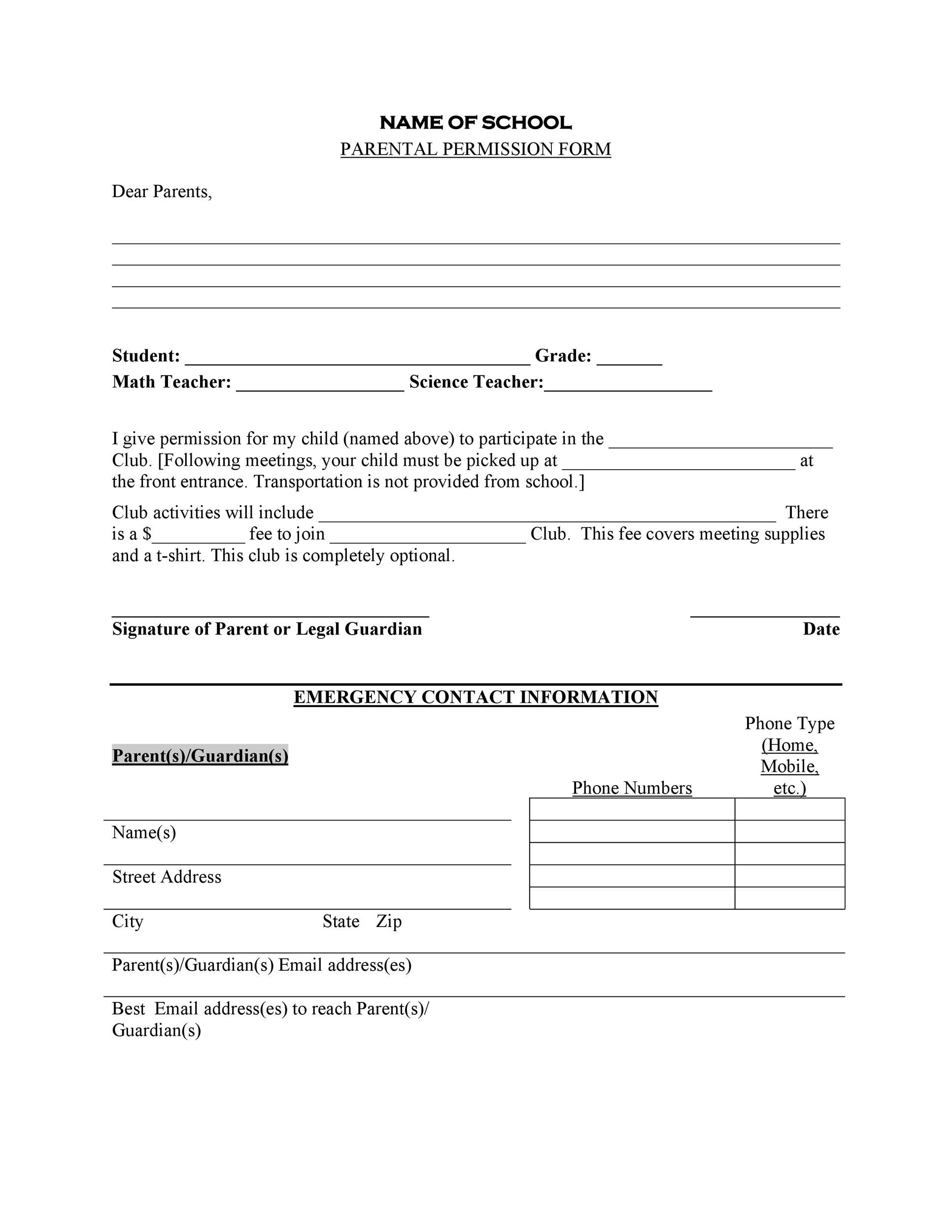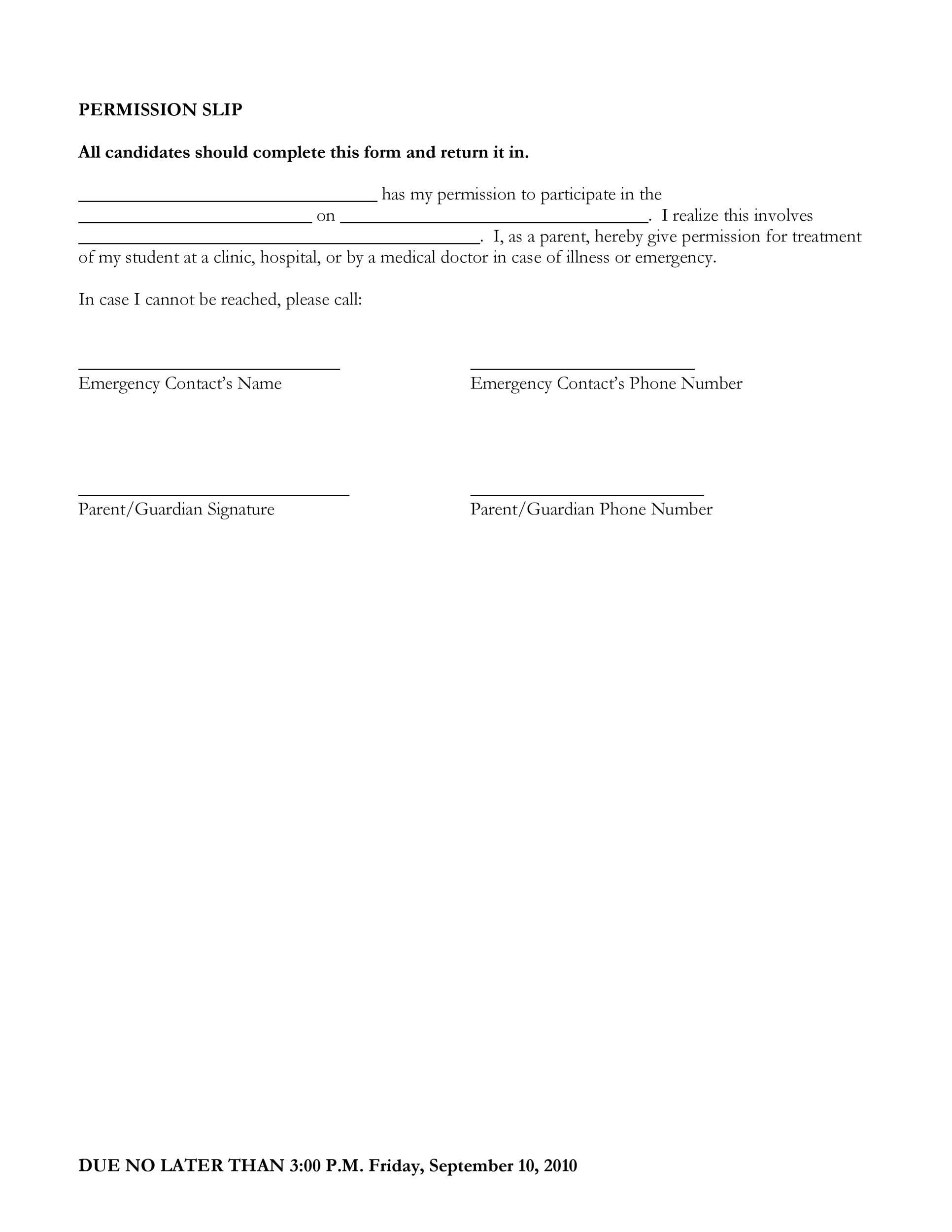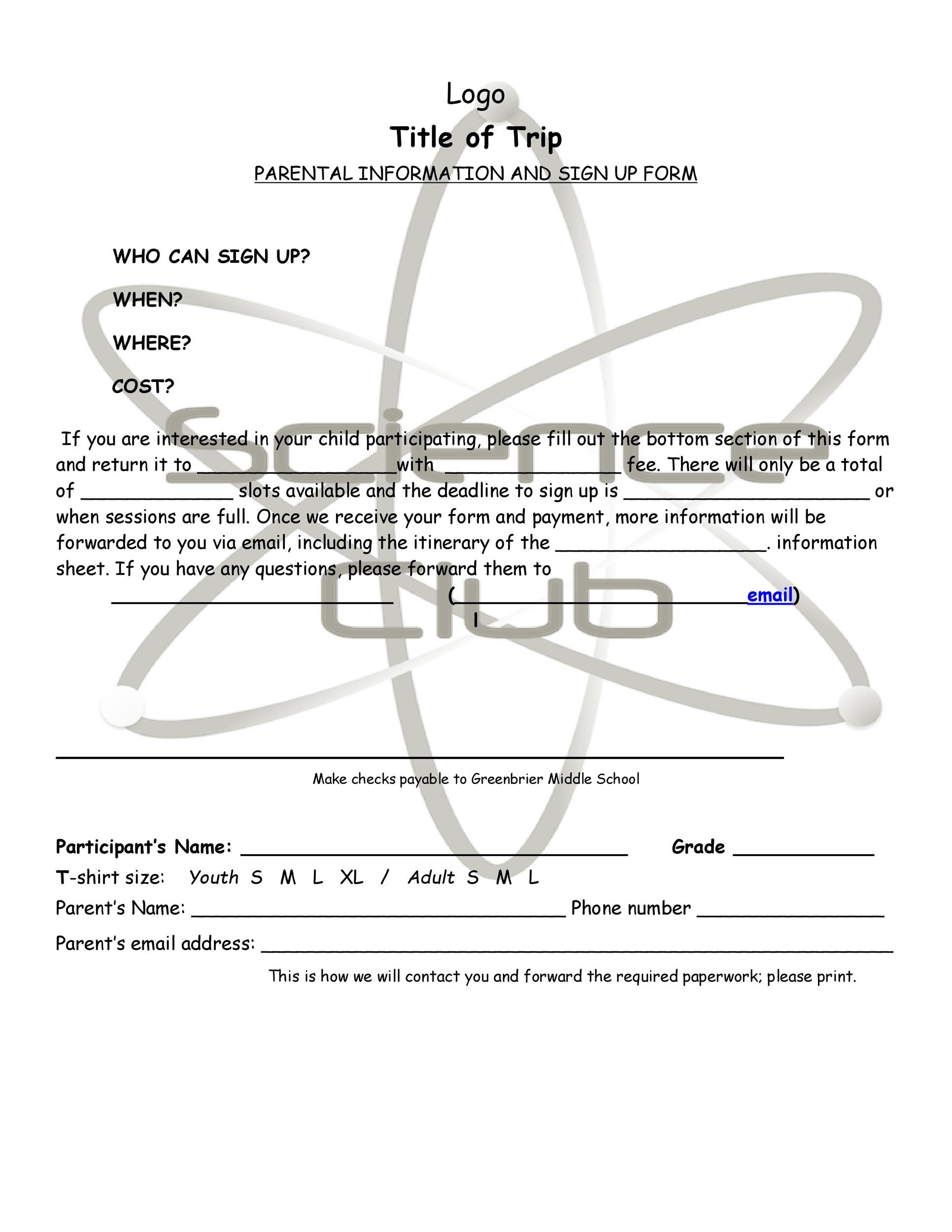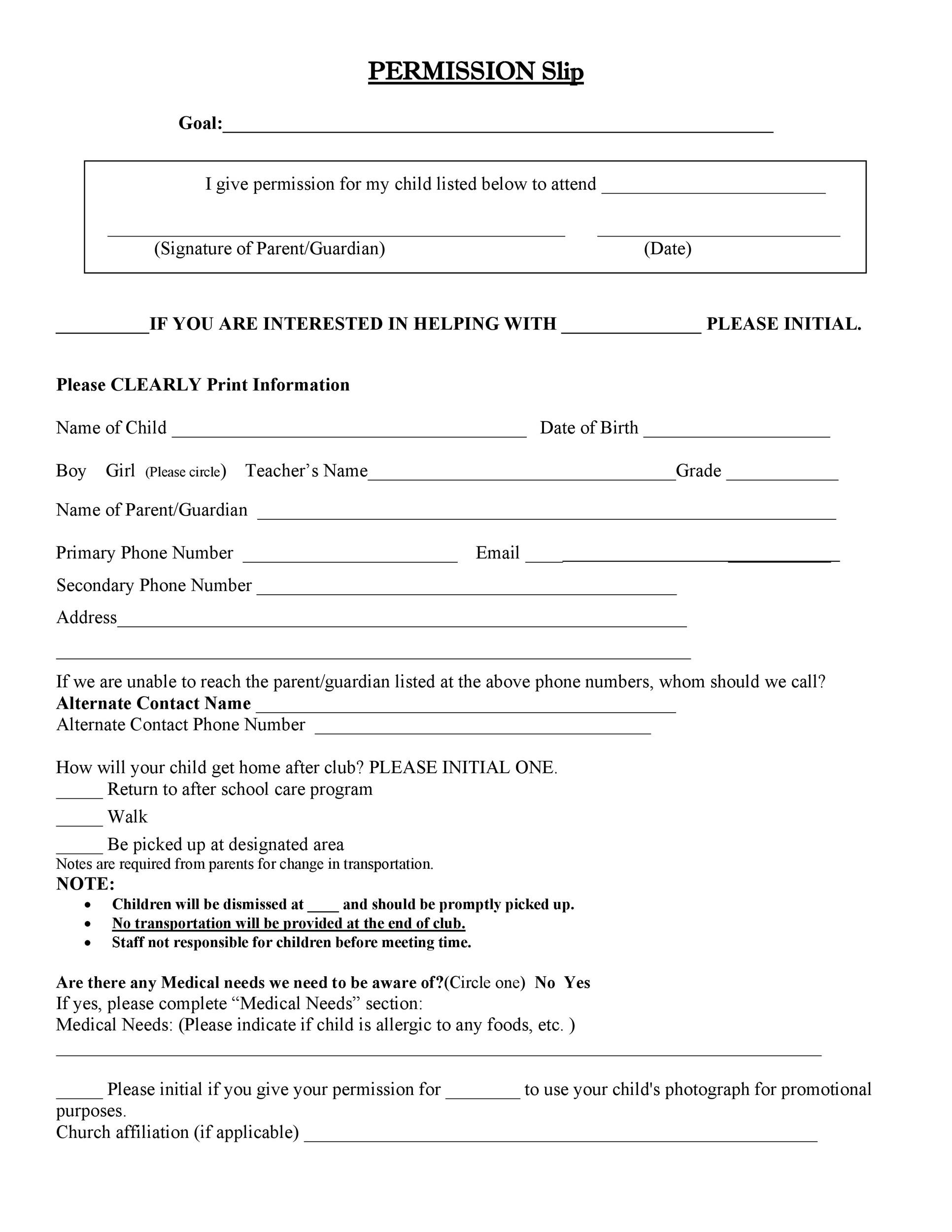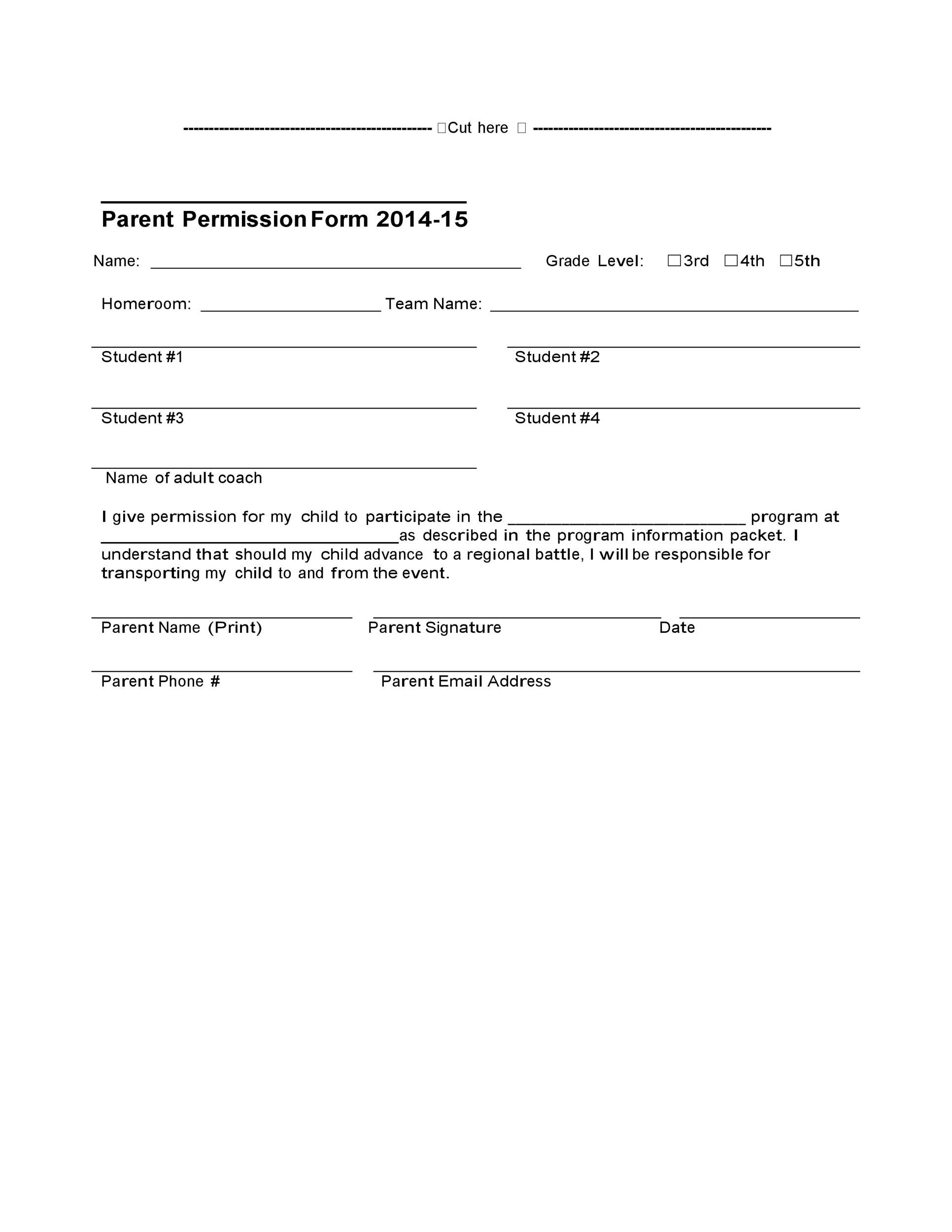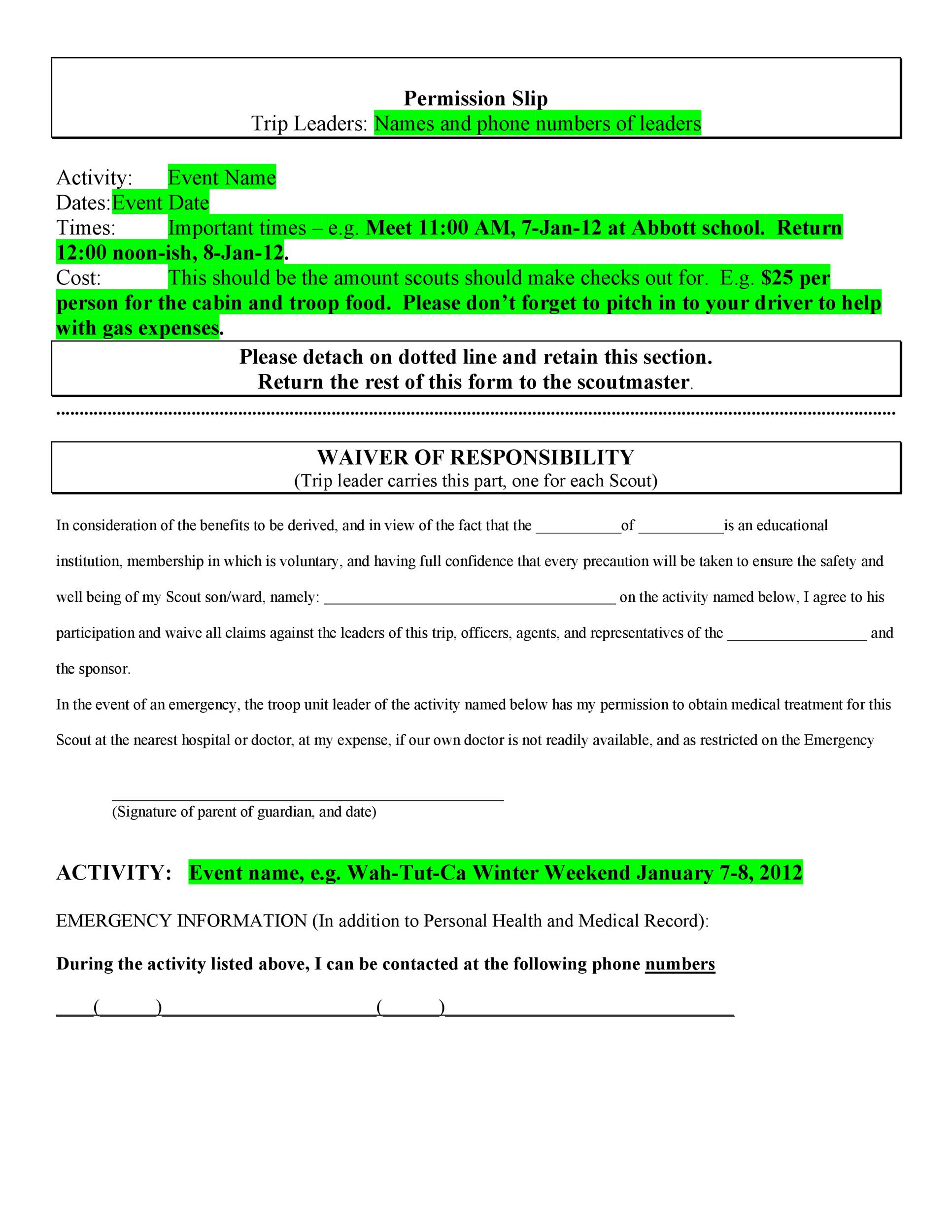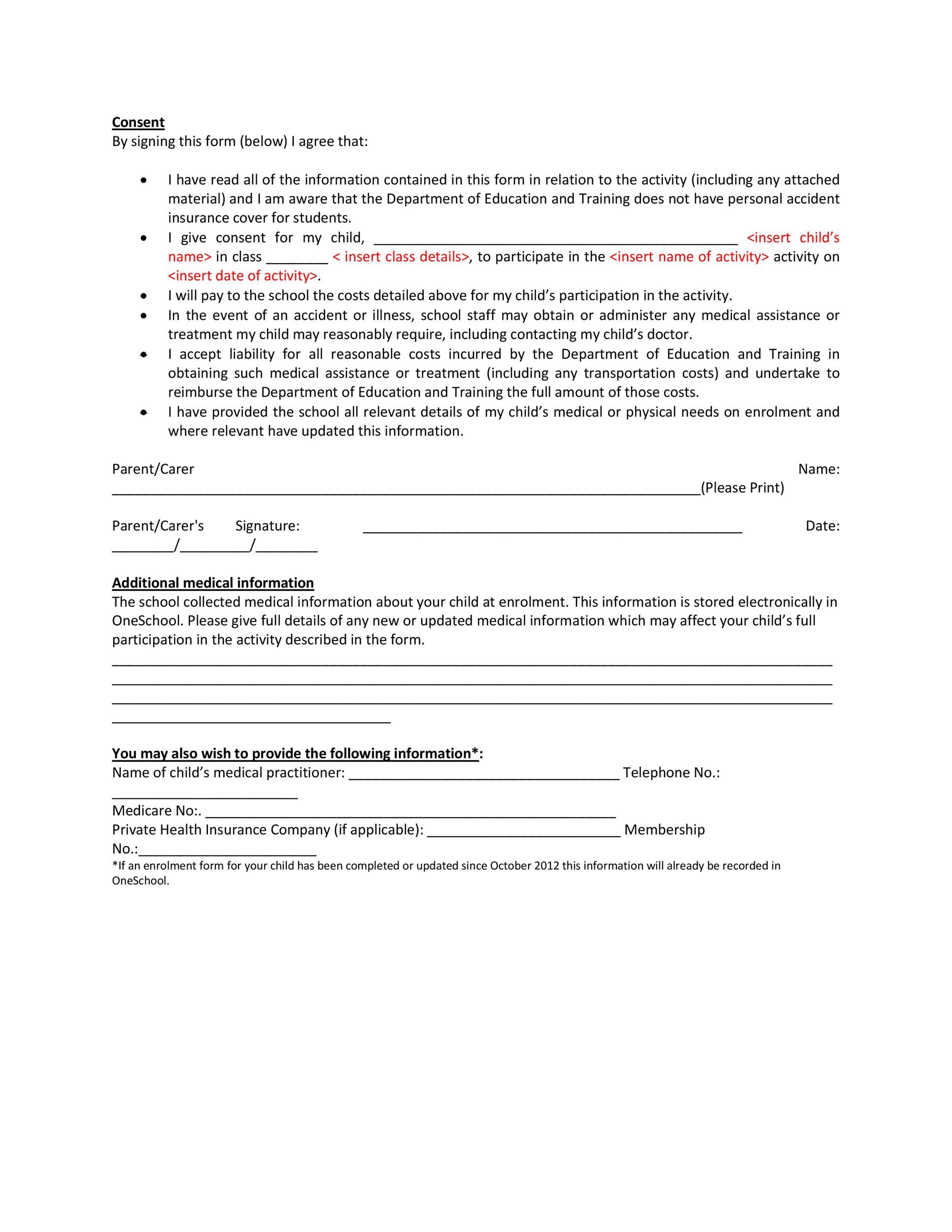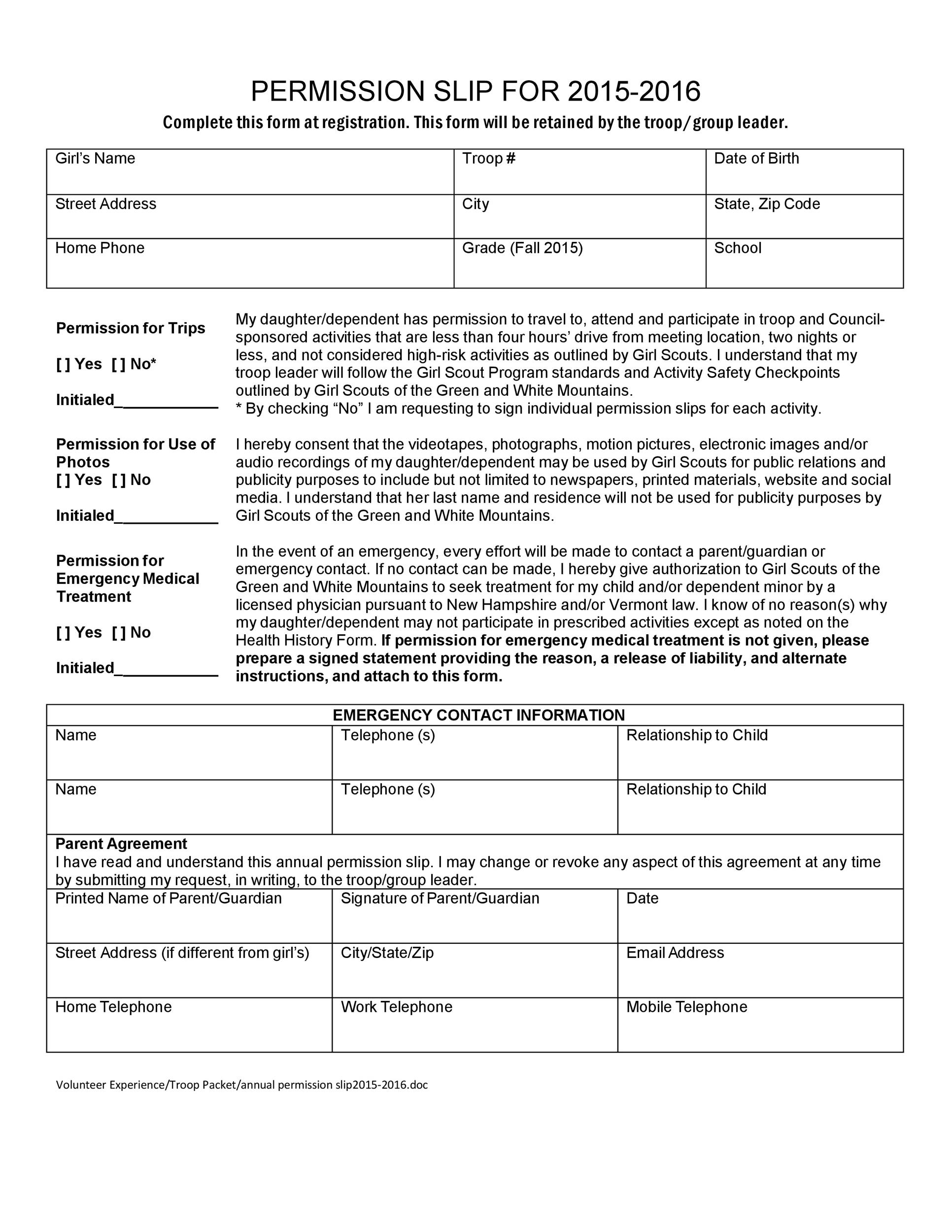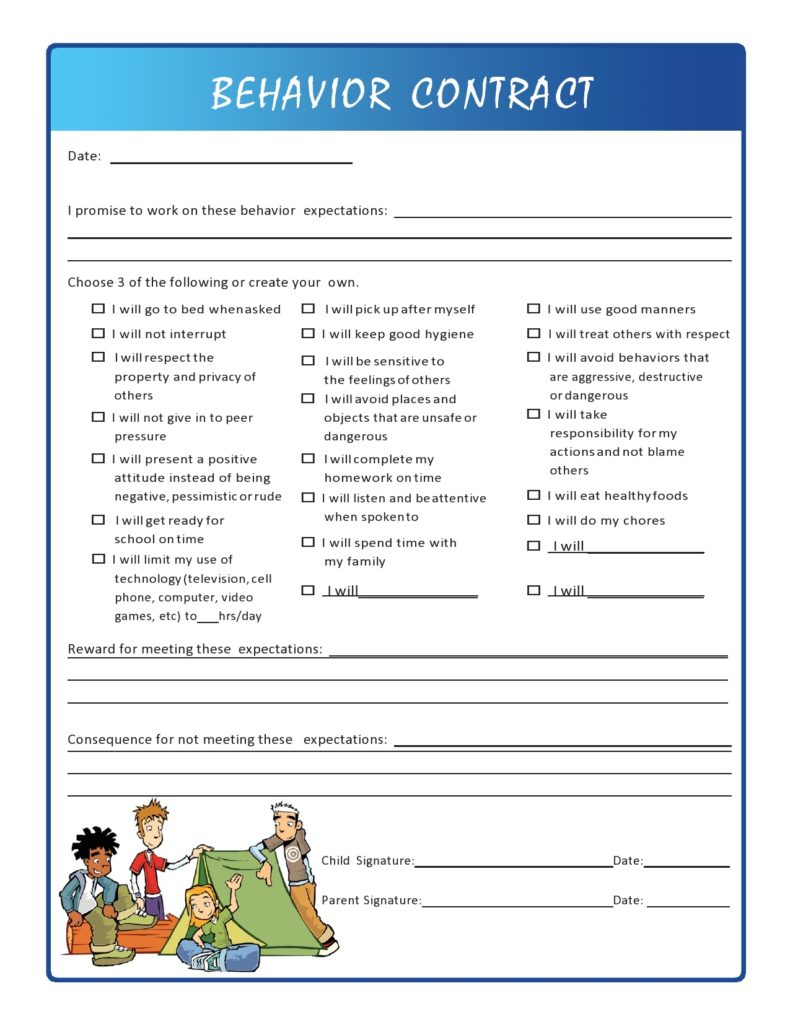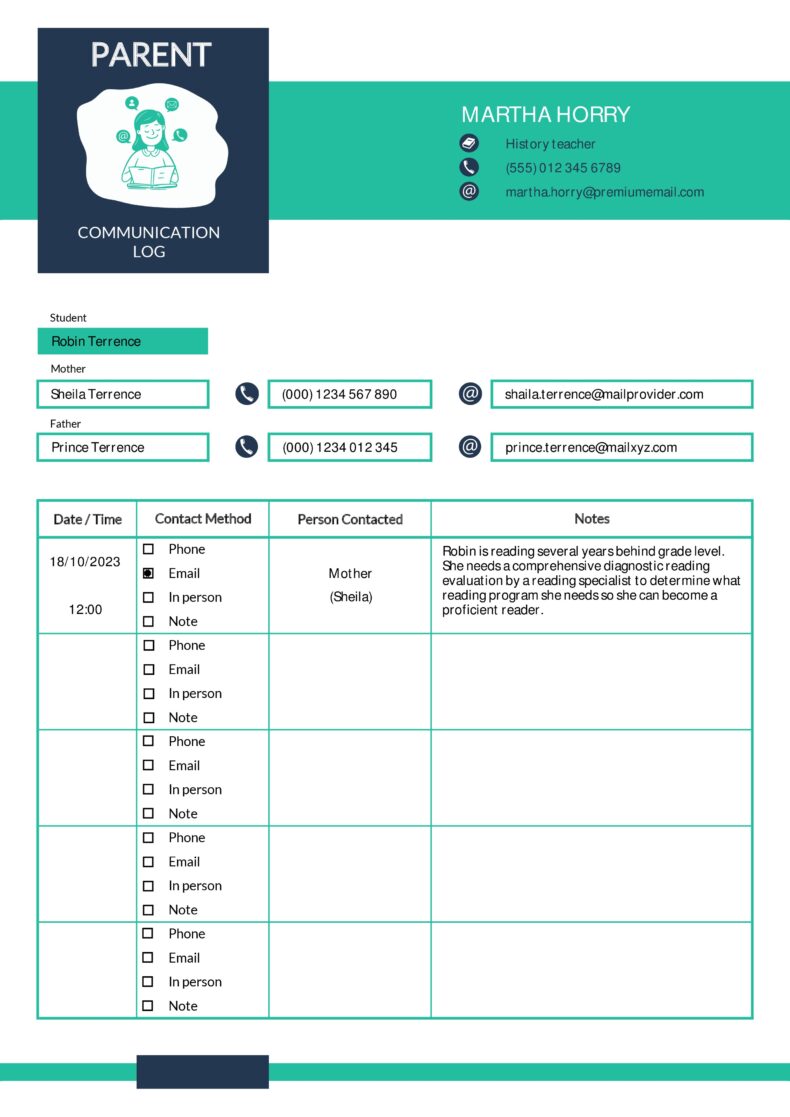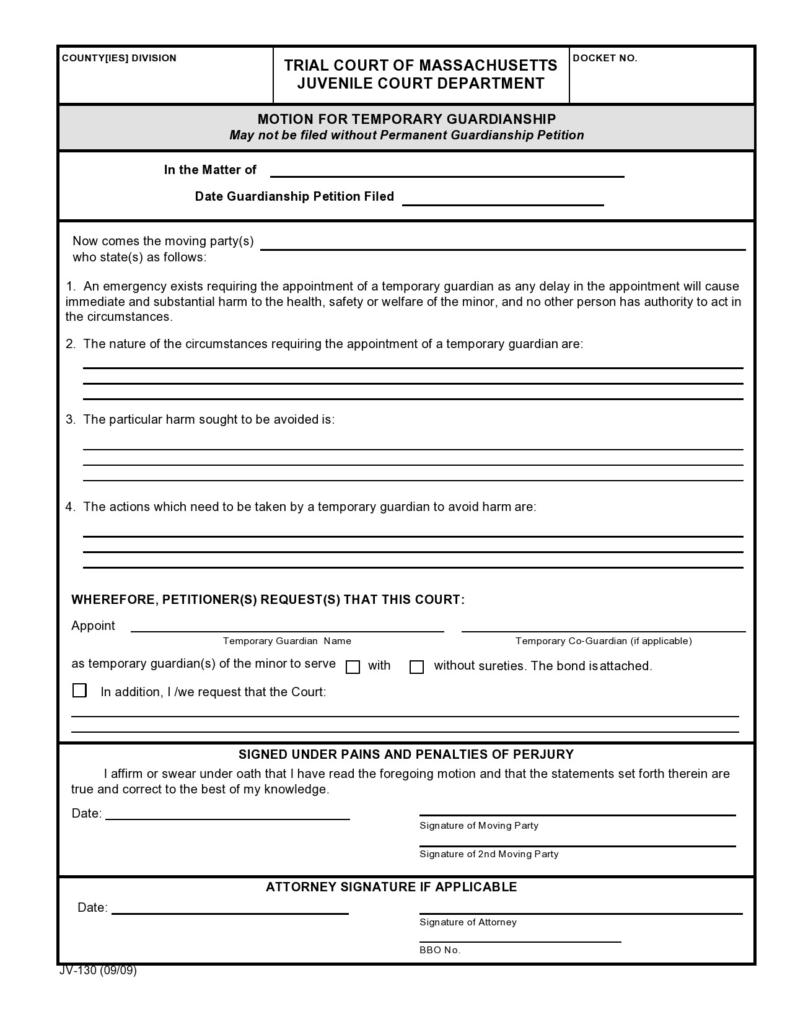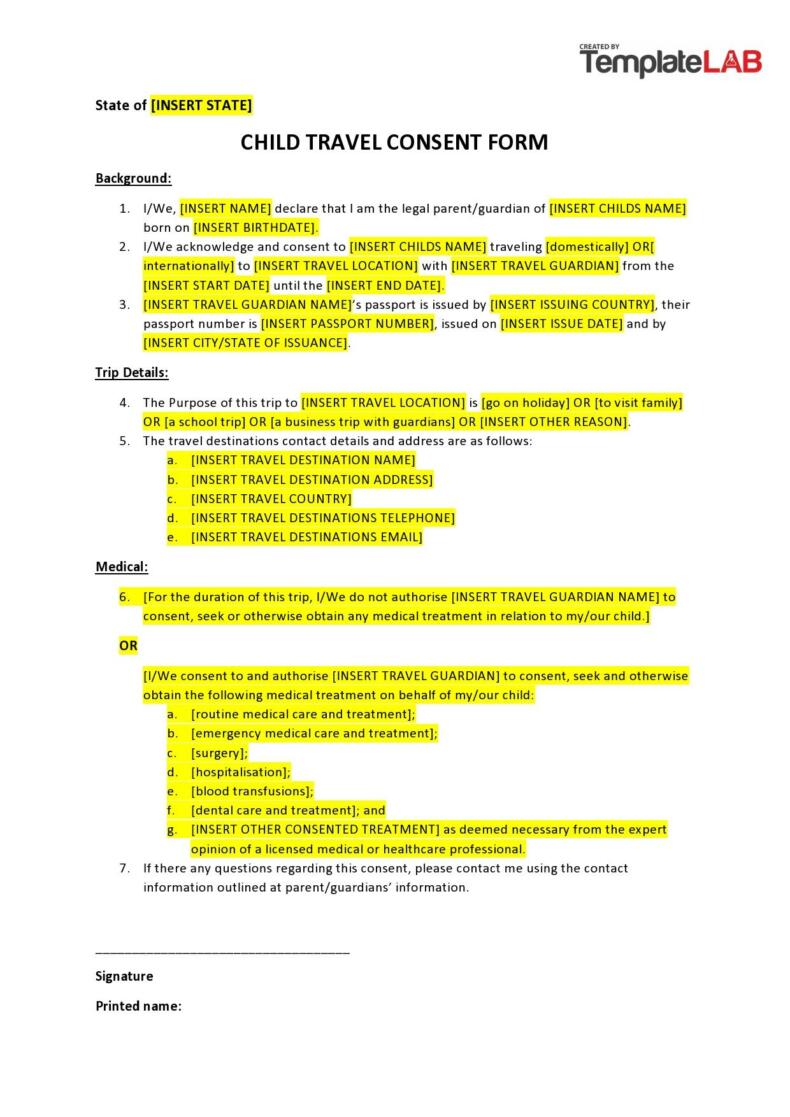Permission slips are an essential part of the education system, especially for schools. They are documents that grant permission to a student or an activity participant to take part in a certain activity, outing, or event. These slips are typically signed by a parent or guardian to ensure that they are aware of the activity and authorize their child’s participation.
Table of Contents
- 1 Permission Slip Templates
- 2 What is a Permission Slip Template?
- 3 Permission Slip Samples
- 4 What Should Be Included in a Permission Slip?
- 5 Why are Permission Slips Important?
- 6 Permission Slip Examples
- 7 Different Types of Permission Slip
- 8 Permission Slip Template Samples
- 9 How to Create a Permission Slip
Permission Slip Templates
What is a Permission Slip Template?
Permission slips are used for a range of events or activities, typically run by schools or community groups. These can include:
- Field trips
- Summer camp
- Sports events
- School activities
- Extracurricular activities
- Consent for photography or videos
However, making permission slips can be an arduous process, especially if you are making them for a large class. As a teacher, I know that managing the workload can be difficult, so using permission slip templates can help to alleviate this problem and make the whole process a lot easier.
Permission slips can help with several important things:
- Keeping kids safe by gaining written consent from their parent or guardian
- Helping teachers and educators stay organized
- Ensuring medical permission if necessary
Permission slip templates therefore ensure that these essential factors can be achieved in a simple, straightforward way.
A permission slip template is a pre-designed document that makes the process of creating permission slips much easier, efficient, and organized. Instead of creating a new permission slip every time a new activity or event comes up, teachers or administrators can use a template and fill in the necessary details.
Online permission slips are also an option for teachers who may use digital approaches to communicate with parents. Many educators are turning towards gaining online permission and using digital permission slips to obtain consent from parents or guardians. This can be an effective and quicker way to gain permission than a traditional paper permission slip. Depending on your usual method of communication with parents or guardians, online permission slips could also be an option for you.
Permission Slip Samples
What Should Be Included in a Permission Slip?
A good permission slip template should include all of the necessary information, such as:
- the name of the child
- the name of the organization or event
- the date and time of the activity
- the location
- the purpose of the event or activity
- any special instructions or requirements
The purpose of the event or activity is an essential feature to not be overlooked. A parent or guardian will use this to give informed consent about whether their child should participate or not in the event, so make sure to provide enough detail about the event.
It is also important to consider whether the event involves anything that could put the child at risk, such as adventure sports, and make sure to specify this in the permission slip. Some medical conditions will prevent children from participating in specific things, so you must be clear when writing the permission slip.
Permission slips are a formal document, so they should generally be designed as such, with minimal decoration. Although it can be tempting to make bright, colorful permission slips with lots of writing on, the best permission slips will look professional and simple. They should be clear and easy to read so that parents or guardians can fill in the information accurately.
Why are Permission Slips Important?
A permission slip is a document that grants permission or approval from a parent or guardian for a child to participate in a certain activity or event, often organized by a school or community organization. It is essential that schools obtain permission from a parent or guardian for many reasons, which we will explore in more detail below.
The slip is signed by the parent or guardian and returned to the organizing group or activity leader to confirm that the child has been granted permission to participate.
- Safety and Liability
Permission slips essentially serve as a legally binding document that helps schools and organizations manage liability and ensure the safety of the students. By requiring parents or guardians to sign the permission slip, they acknowledge that they understand the details of the activity and agree to take responsibility for any risks associated with it. This not only protects the school, but also ensures that parents are aware of any potential dangers or concerns.
Permission slips also make teachers aware of any medical conditions that students may have, and how or when to administer necessary medical treatment. This is essential information that helps to protect students on a field trip, at summer camp, or at a sports event. - Consent and Authorization
Permission slips provide a means for parents or guardians to give consent and authorize their child’s participation in specific activities or events. By signing the slip, they indicate that they agree with and trust the school’s judgment regarding the activity. This helps foster effective communication and cooperation between parents and schools. - Information Sharing
Permission slips are an excellent way to share necessary information with parents or guardians. They serve as a platform to communicate essential details about an upcoming event, including the purpose, date, time, location, and any specific instructions or requirements. This way, parents have all the information they need to make an informed decision about their child’s involvement. - Record Keeping
Permission slips serve as documentation of a student’s participation in an activity or event. Schools can keep these slips on file as proof that they have obtained proper consent and authorization from parents or guardians. In case of any disputes or queries, these records can provide clarity and serve as evidence of compliance with policies and regulations. - Organizational Efficiency
By using permission slip templates, schools can streamline the process of obtaining consent and managing participation in various activities. Templates not only save time and effort for administrators and educators but also provide consistency and clarity in the information conveyed to parents. This streamlined approach helps ensure that every participant has the necessary permissions and that events are well-organized.
Permission slips are important because they ensure that children participate in activities safely and with the consent of their parents or guardians. They also provide important information for organizers, such as emergency contact information for the child, any medical conditions or allergies that need to be taken into consideration, and signed agreement to follow all rules and regulations of the activity.
The slip acts as a legal agreement between the parents or guardians and the organizers, providing protection for both parties. By obtaining the necessary permission, the organizers are able to plan activities with the knowledge that the child is authorized to participate and that their safety and well-being have been taken into account.
Permission Slip Examples
Different Types of Permission Slip
Different types of permission slips are used depending on the nature of the activity or event, and it’s key that you choose the correct permission slip templates for you.
Two common types of permission slips include blanket or general forms and informed consent forms.
- Blanket or General Form
A blanket or general permission slip is a document that grants permission for a child to participate in multiple activities or events over a specified period. It is often used by schools or organizations that offer a range of extracurricular activities throughout the year. The purpose of this form is to obtain a broad parental consent that covers all activities.
Some key features of a blanket or general permission slip include:
Comprehensive Consent: This form typically includes a list of activities or events that the child may participate in throughout the specified period. It covers activities such as field trips, sports events, club meetings, and other similar occasions. By signing the blanket permission slip, parents or guardians provide consent for their child to participate in any of the listed activities.
Specific Conditions: Although a blanket permission slip covers various activities, it usually contains clauses mentioning specific conditions or restrictions. These may include limitations based on age, fitness level, or any other requirements deemed necessary for particular activities. This helps ensure that parents have knowledge of potential limitations or activities that may require additional consent or medical information. - Informed Consent Forms
Informed consent forms are more specific permission slips that focus on detailed information about a particular activity, event, or medical procedure. These forms are commonly used when an activity involves higher risks or is of a sensitive nature. Examples include study trips, outdoor adventures, medical procedures, or participation in research studies.
Some key information found in informed consent forms are:
Detailed Activity Description: Informed consent forms provide a thorough explanation of the activity, including its purpose, goals, potential risks, and benefits. The form should outline not only the nature of the activity but also any potential physical, emotional, or psychological risks associated with it.
Assumption of Risk: This section clarifies that parents or guardians understand and accept the potential risks involved in the activity. It may include a statement acknowledging that they have been given the opportunity to ask questions or seek additional information regarding any concerns they may have.
Discussion of Alternatives: For certain activities, the informed consent form may outline alternative options or activities that can be considered if the specific activity is not deemed suitable for the child. This allows parents or guardians to have alternatives in mind and make a more informed decision.
Confidentiality and Privacy: Informed consent forms often include a section discussing confidentiality and the use of personal information. This section ensures that parents or guardians are aware of how their child’s information will be handled and protected during the activity or event.
Signature and Date: Similar to other permission slips, an informed consent form requires the parent or guardian’s signature and date. By signing, they are demonstrating their understanding of the information provided and granting permission for their child’s participation.
Permission slips serve the important purpose of obtaining parental consent for a child’s participation in various activities or events. Blanket or general forms grant consent for multiple activities over a specific period, while informed consent forms focus on providing detailed information about a specific activity, event, or procedure.
By using the appropriate type of permission slip, organizations and parents can ensure that the child’s participation is safe, informed, and in compliance with legal requirements.
Permission Slip Template Samples
How to Create a Permission Slip
In the modern age, not all permission slips are on paper, and some are often electronic slips that require online permission and digital signatures. Electronic permission slips can be created using an online tool, such as Microsoft Word or Google Docs. You may choose to create permission slips digitally or as paper forms, but whichever method you choose, you can follow these simple steps to help you create a professional-looking permission slip.
- Choose a layout
The layout of the permission slip should be clear and easy to read. You can choose either a landscape or portrait layout and make sure it is consistent throughout the template. - Add a header:
Include a header that states the school or organization’s name, the name of the event, and the date. - Provide an introduction:
In the introduction, briefly explain the purpose of the event or activity and highlight any requirements or precautions. - List the details:
Include all the necessary details about the activity, such as the date, time, location, transportation, the expected duration, and any additional instructions or requirements. - Add a parent signature line:
Leave some space at the bottom of the permission slip for the parent or guardian to sign and date the form. - Include a deadline:
Add a deadline for the return of the permission slip and make sure it is visible to parents or guardians. - Customize it:
Personalize the template by including the school or organization’s logo, colors, and other relevant details.
You can use this guide to easily create permission slip templates for your next educational outing, or simply download one of our free permission slip templates to save yourself time.
In conclusion, permission slips play a vital role in facilitating communication, ensuring student safety, managing liability, and maintaining records within schools and organizations. They serve as a tangible means of obtaining consent, providing essential information, and establishing a clear understanding between parents and educational institutions. Therefore, it is essential that schools and organizations prioritize the use of permission slips for any activities or events involving students.

